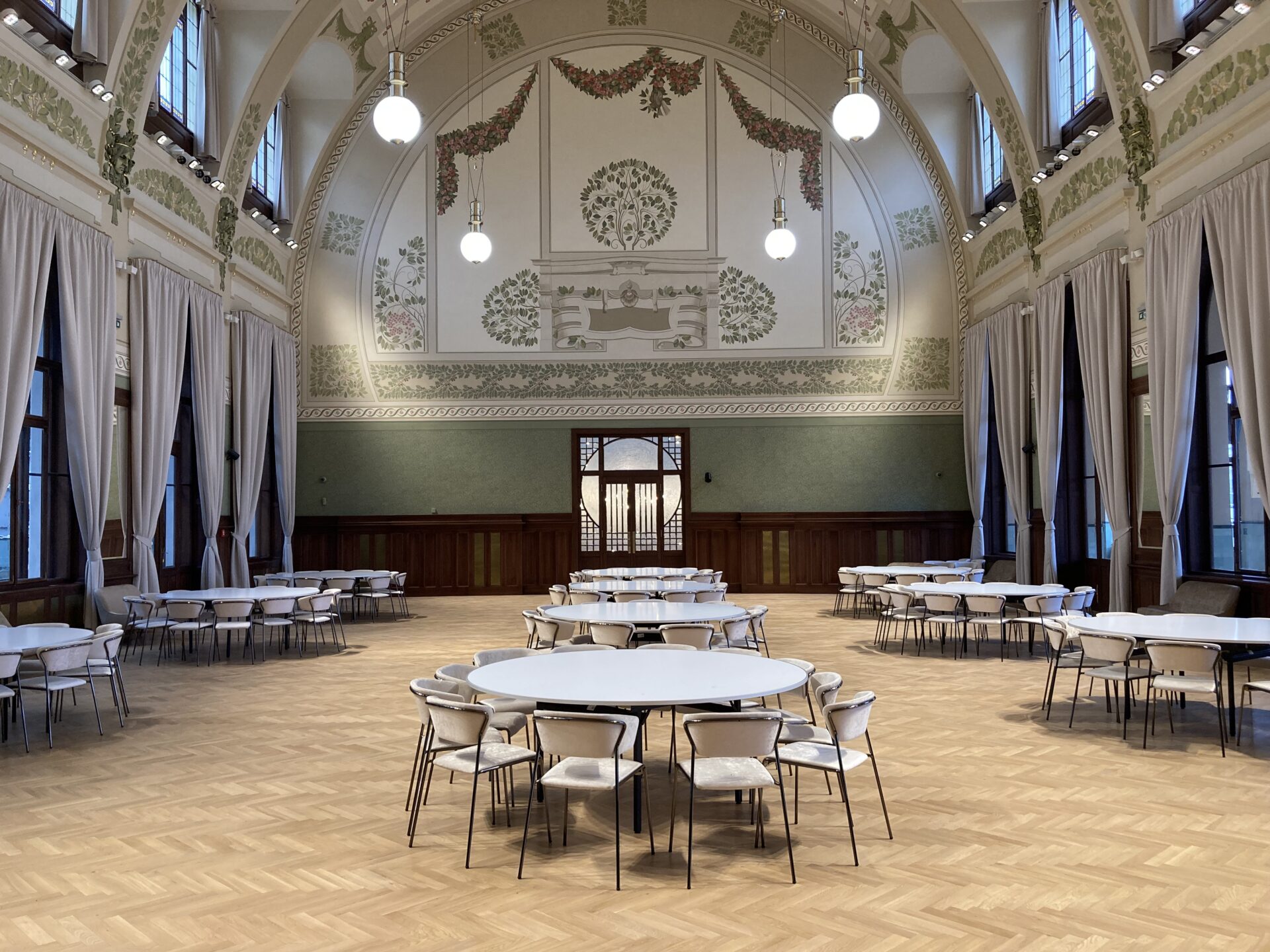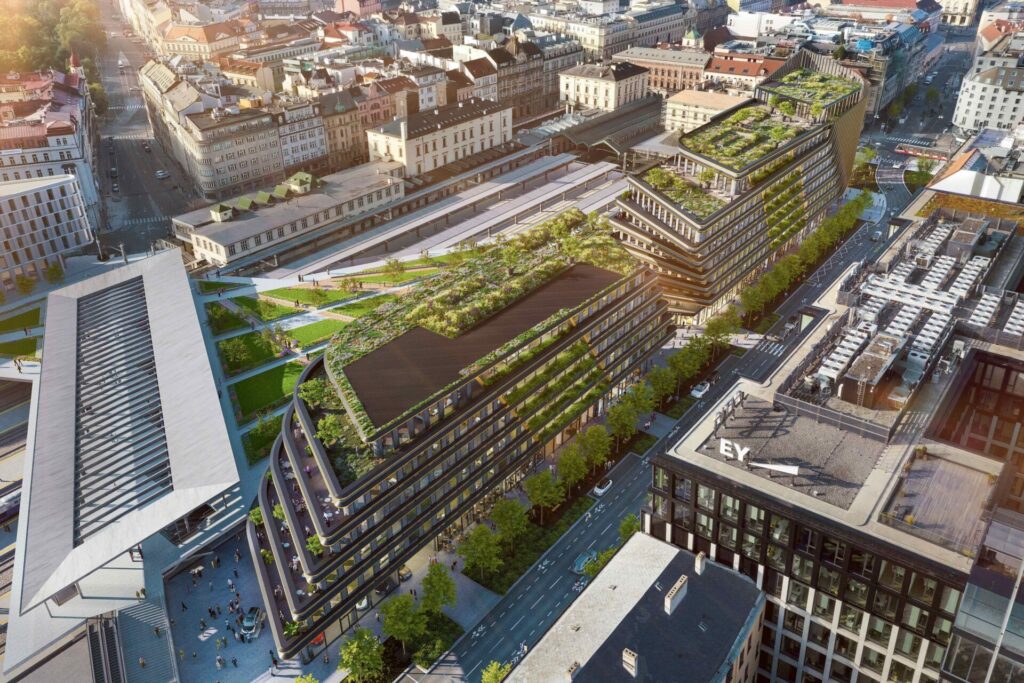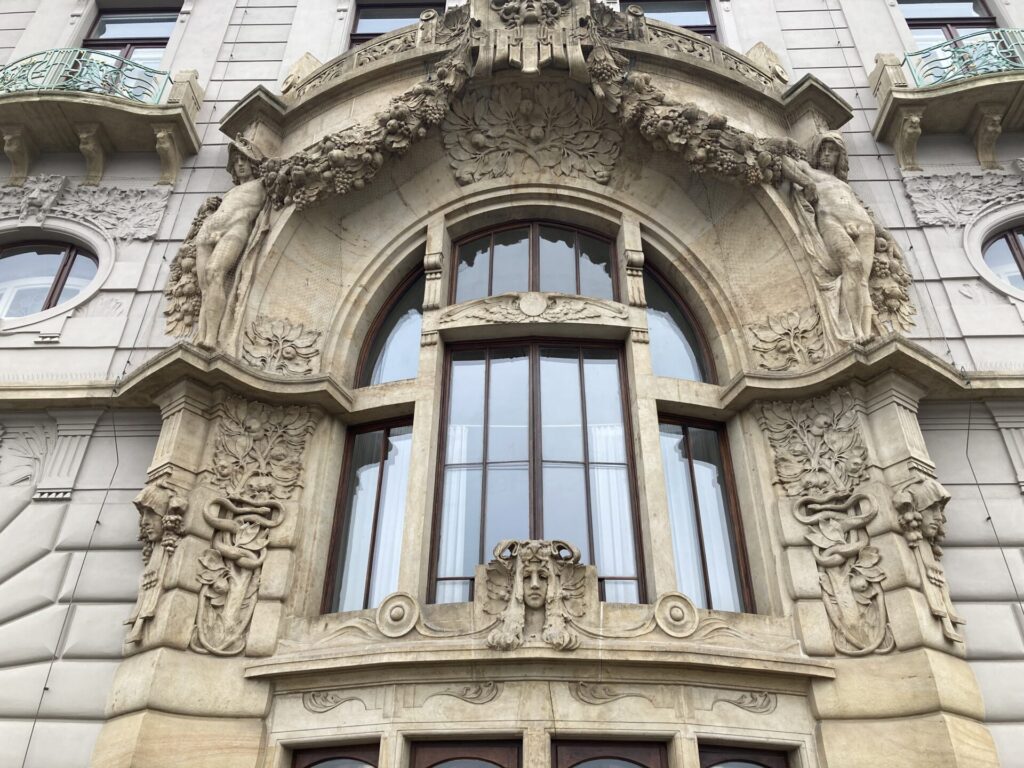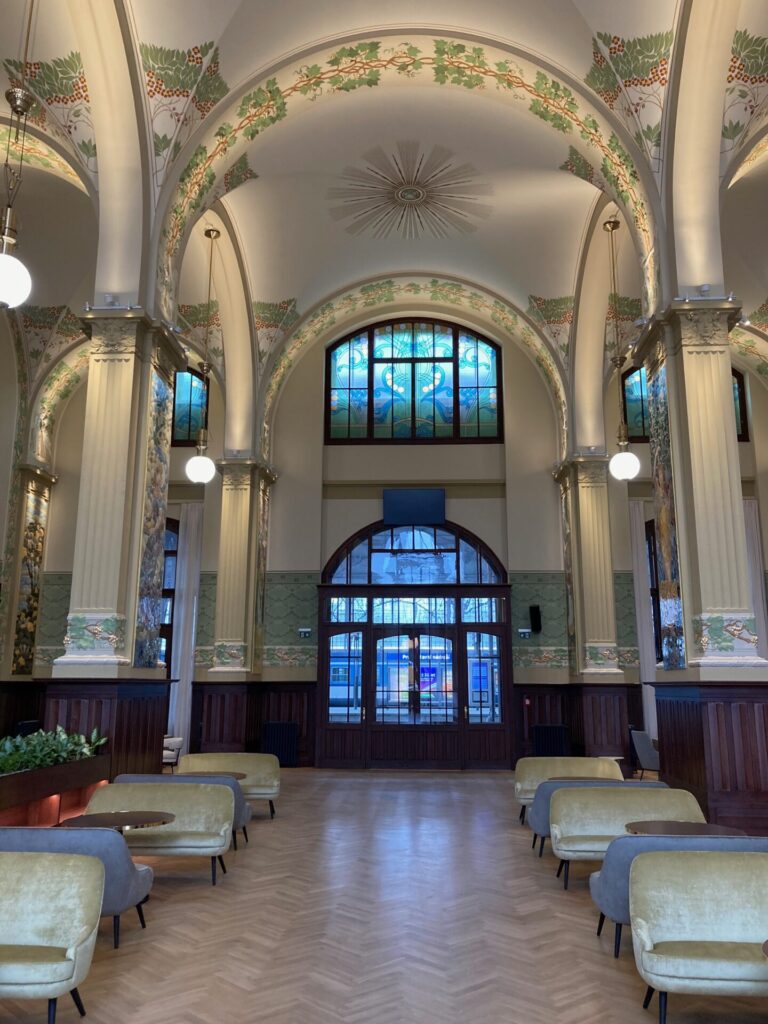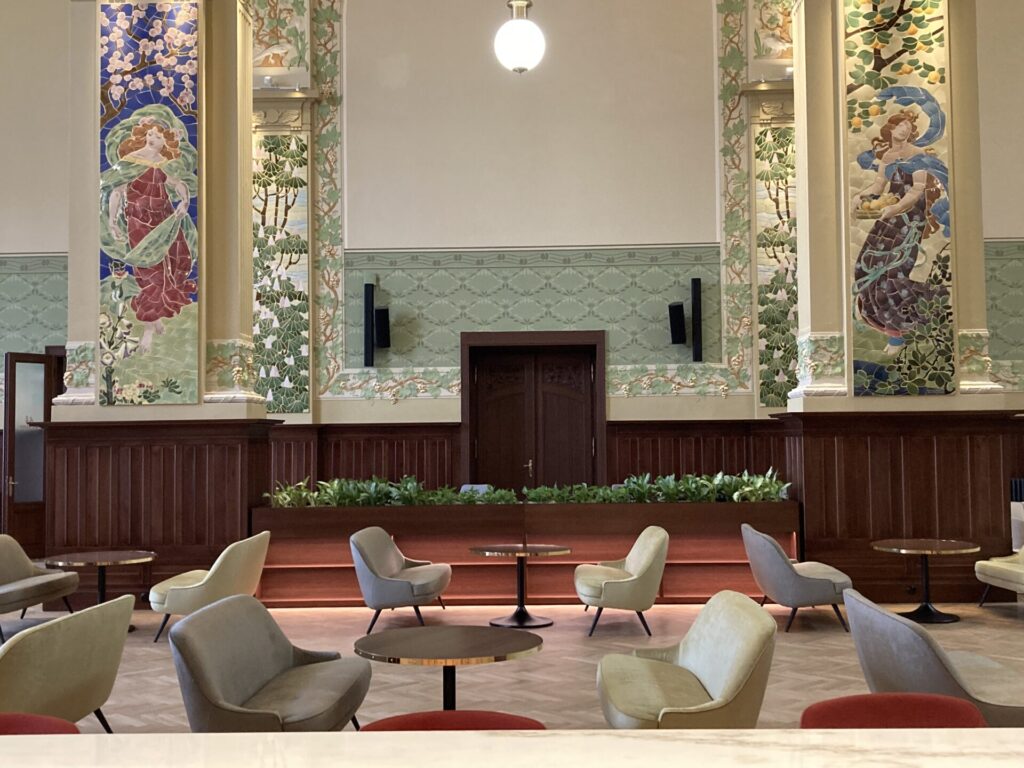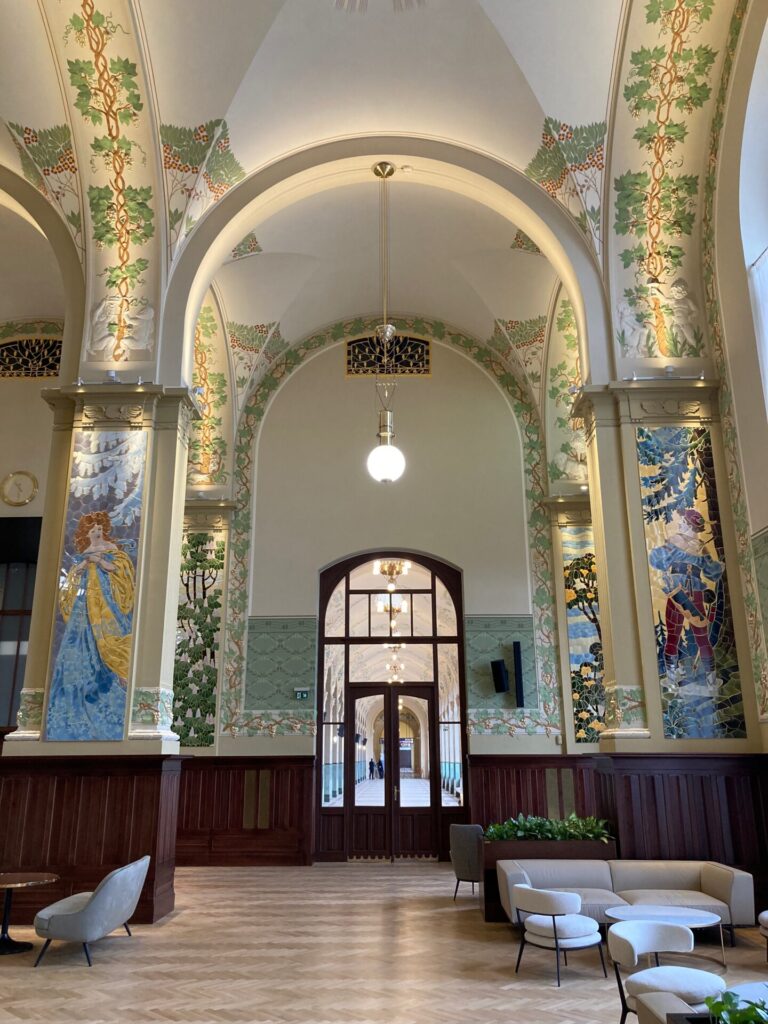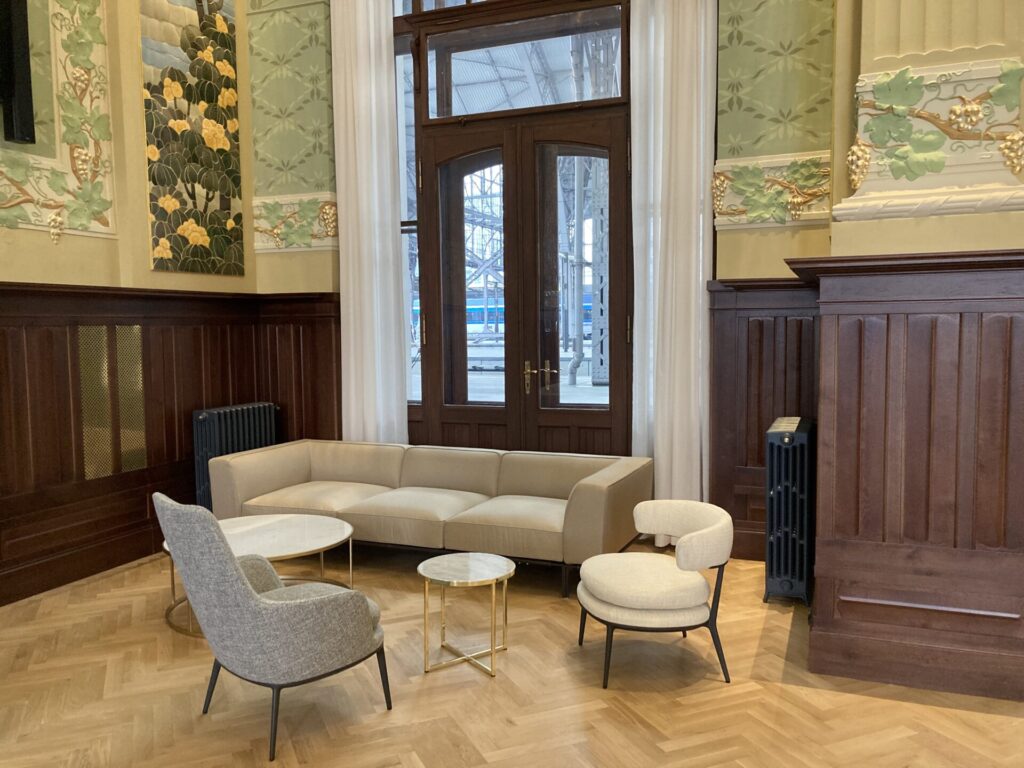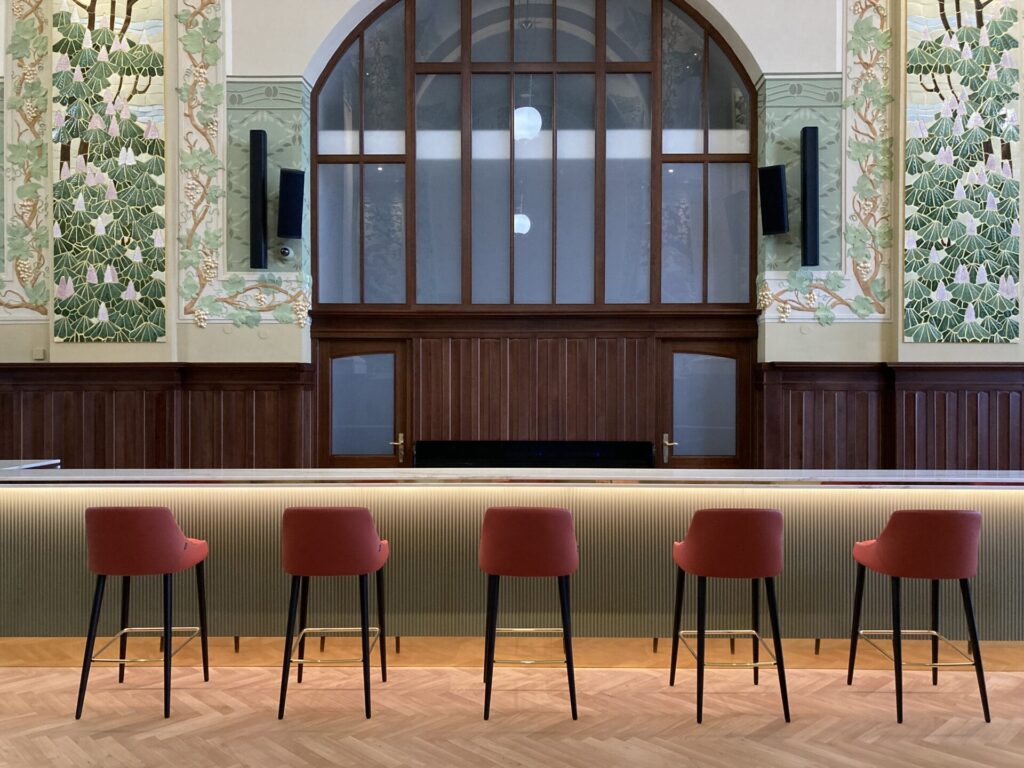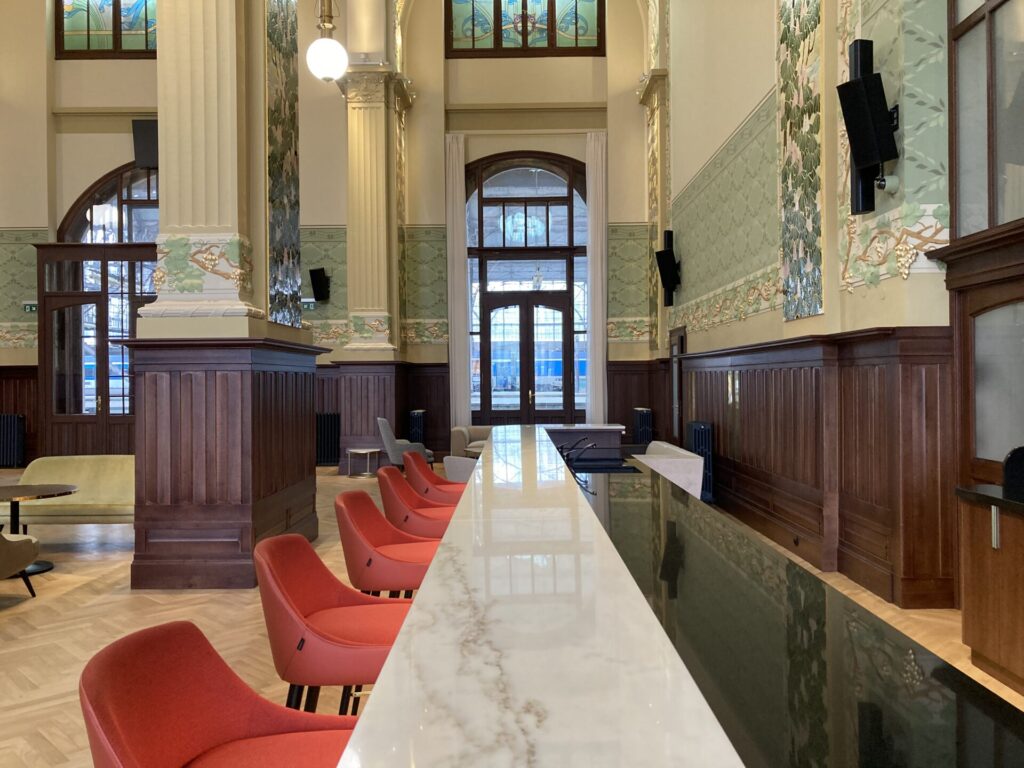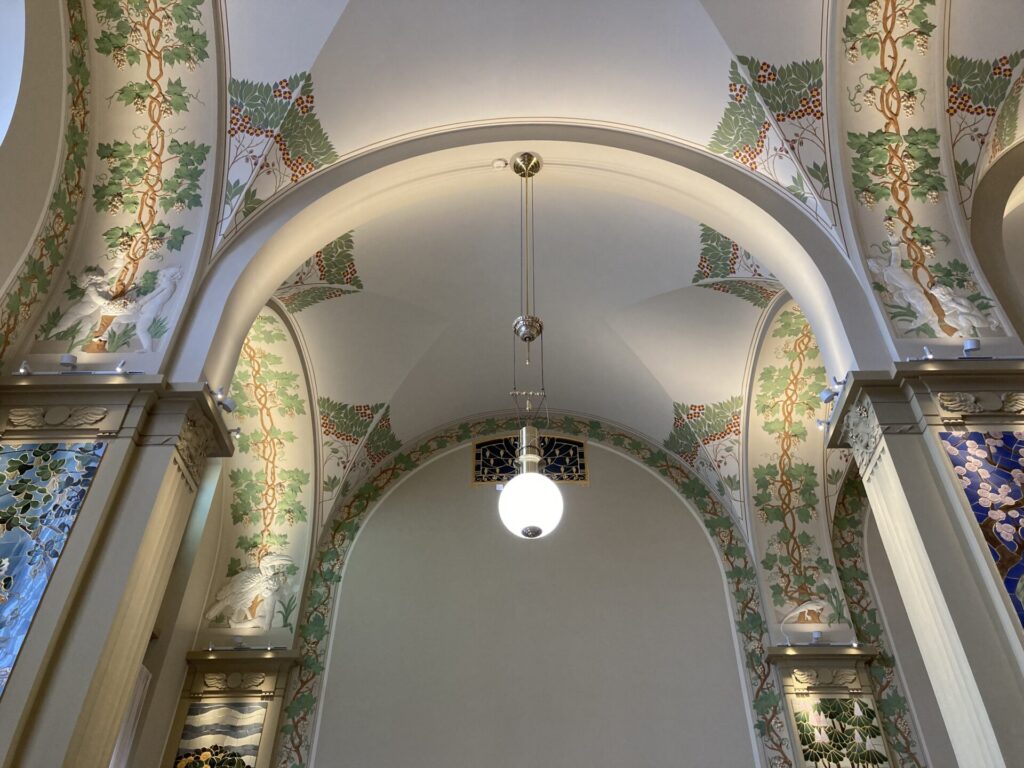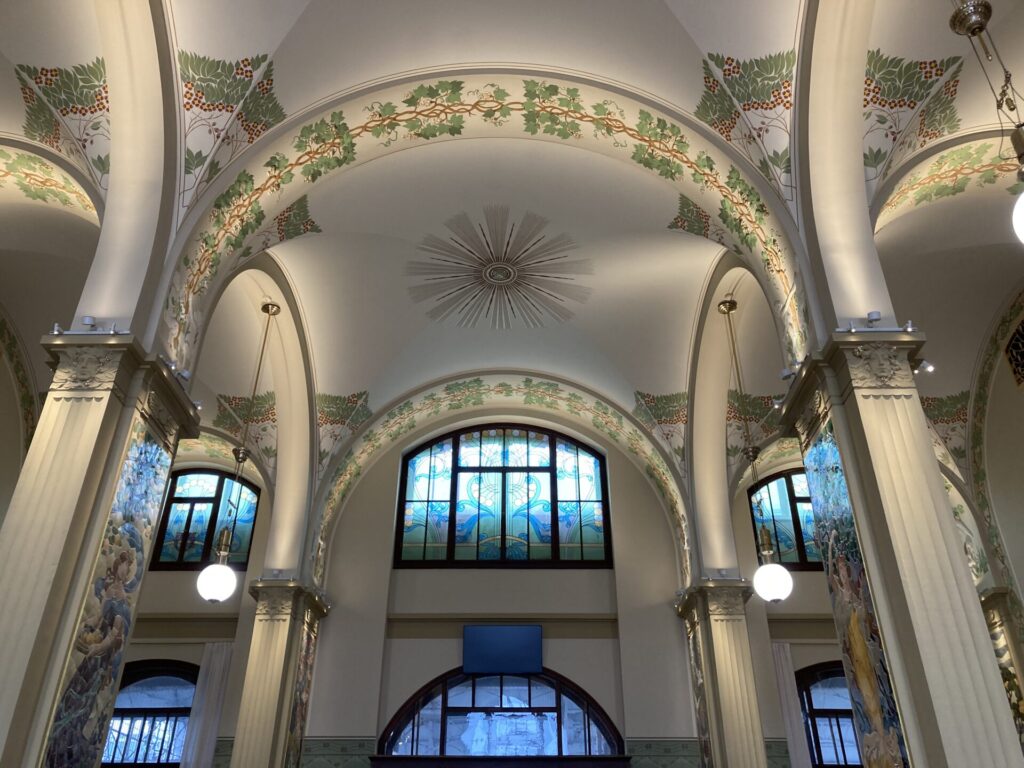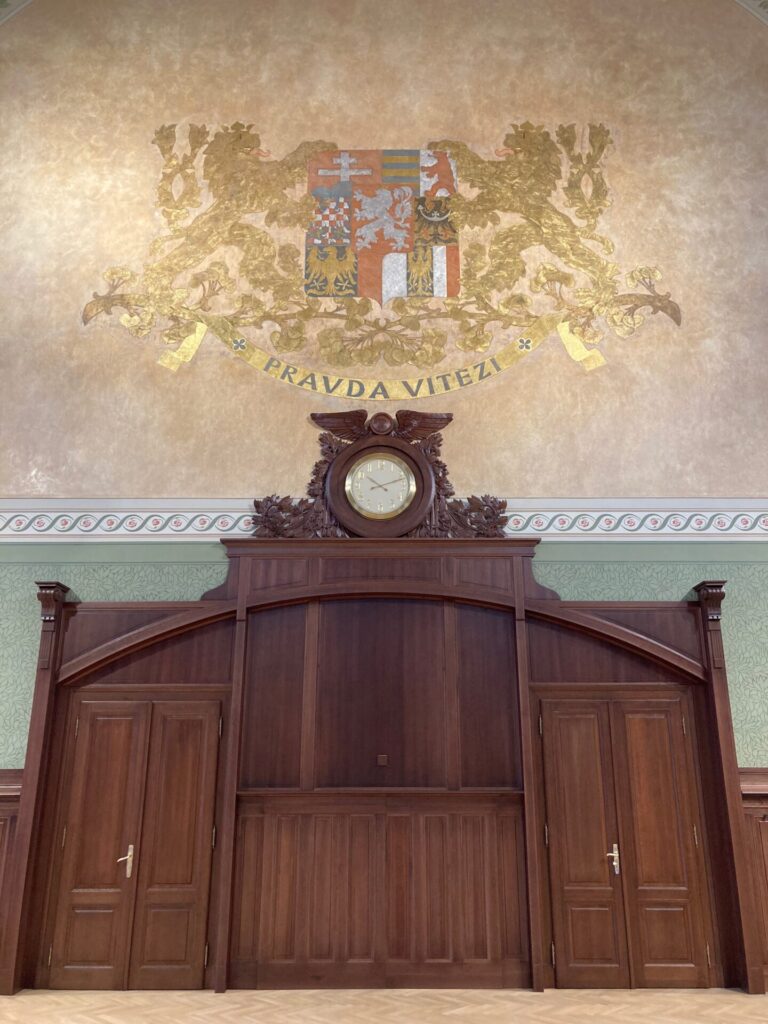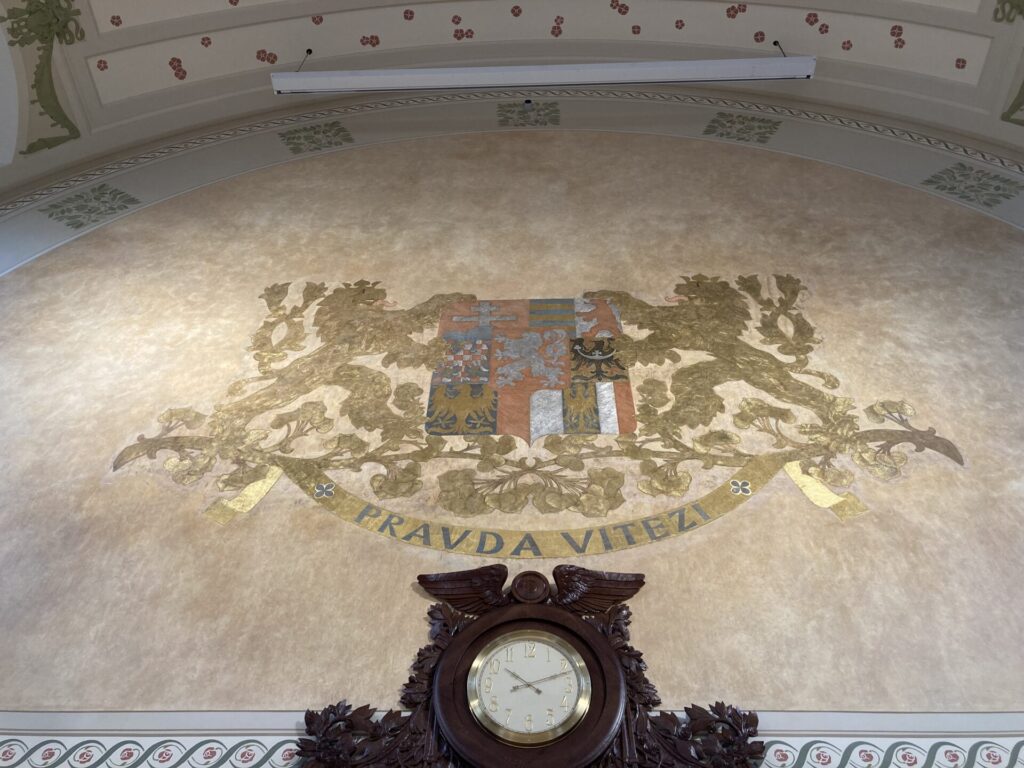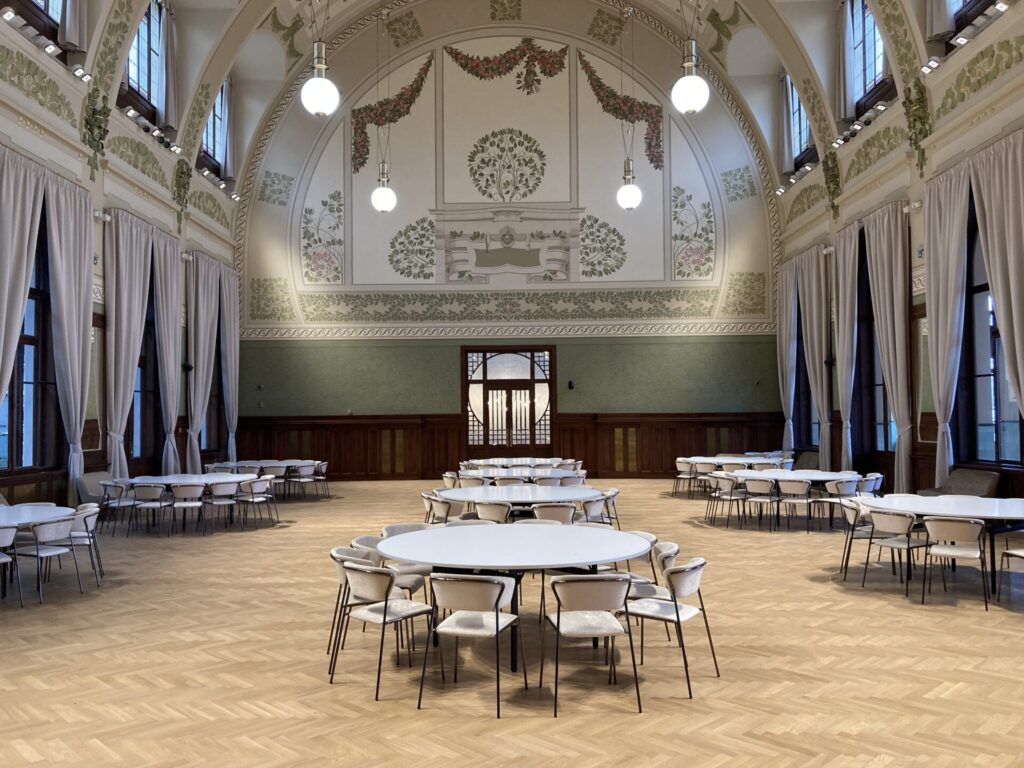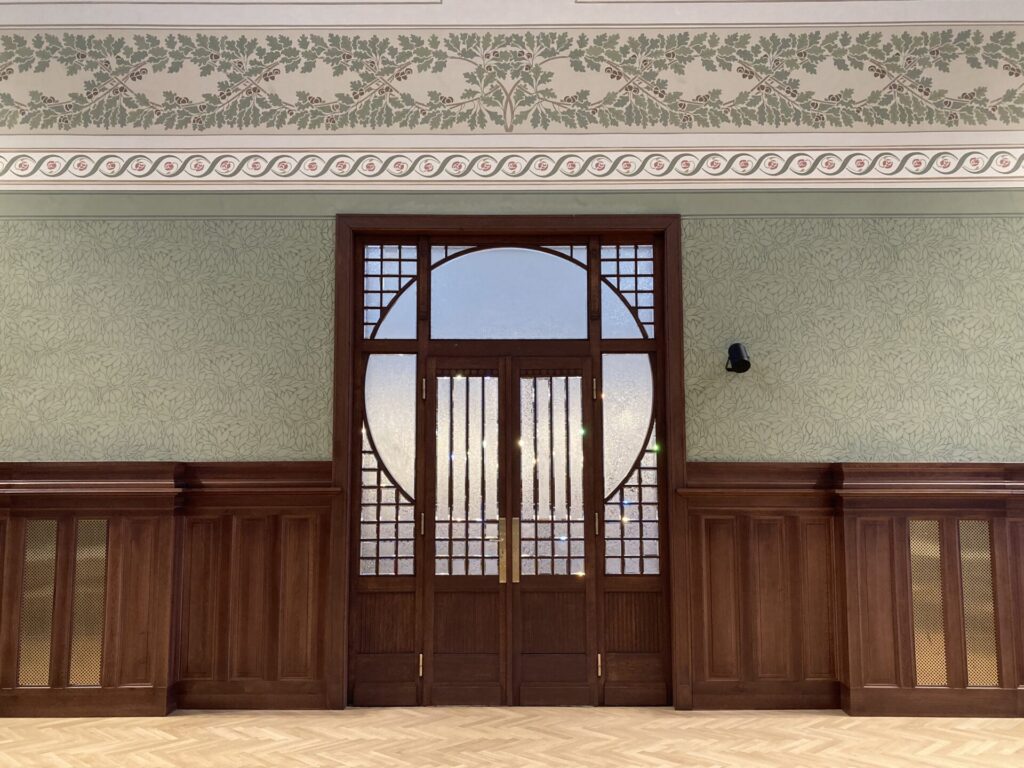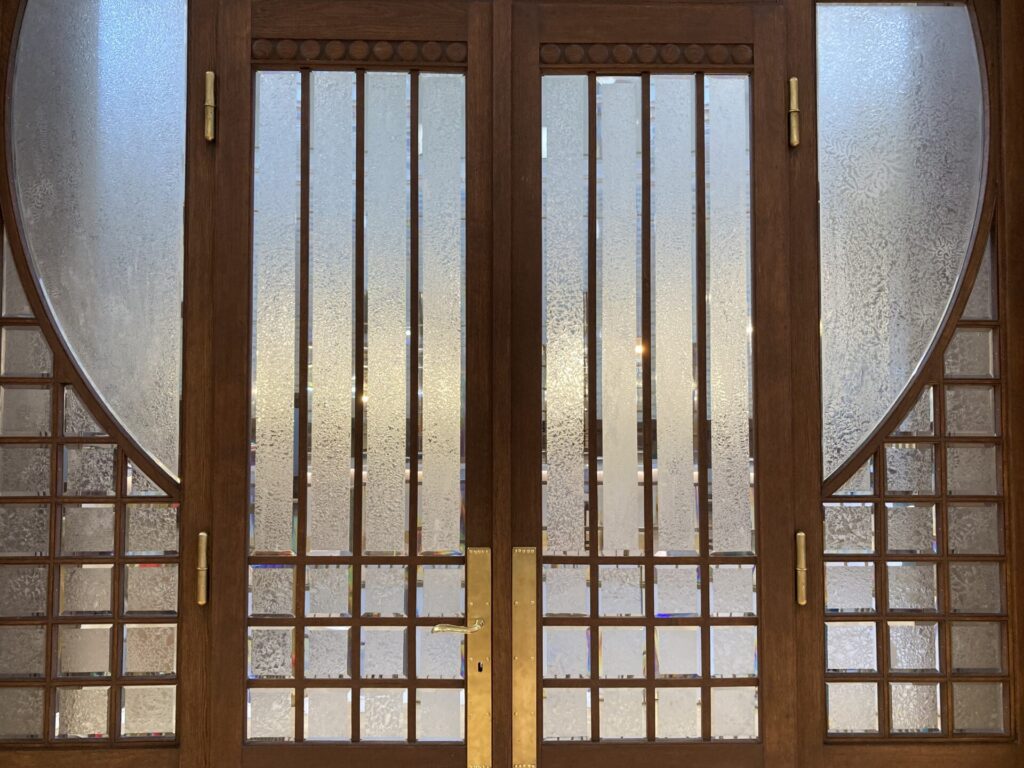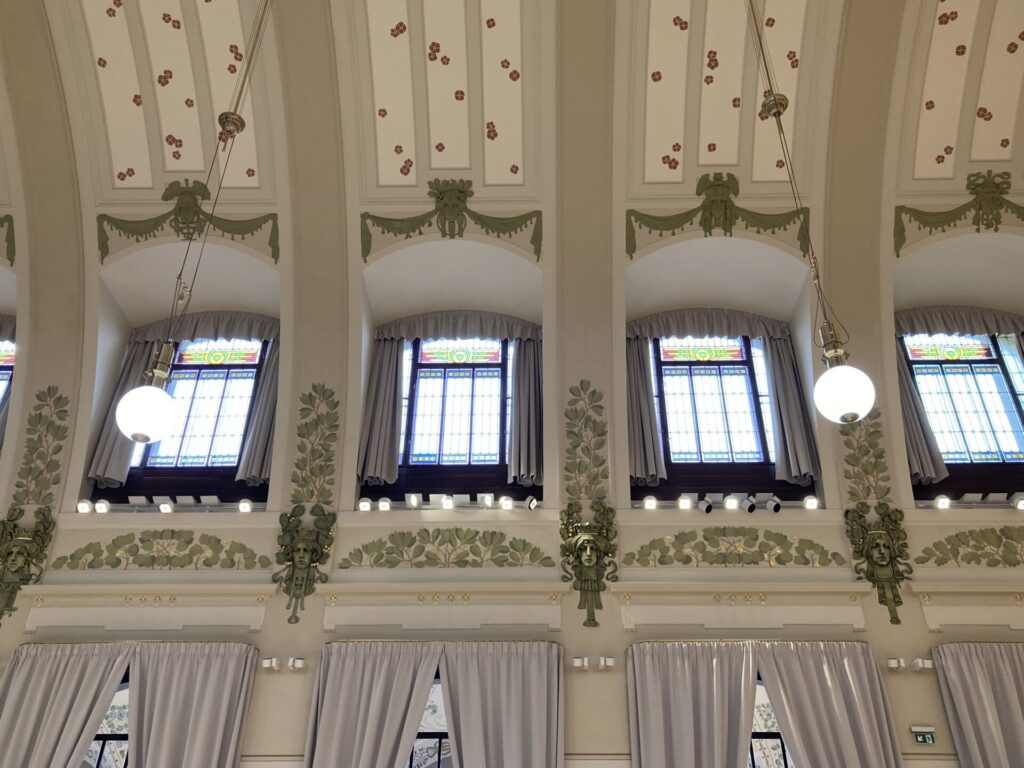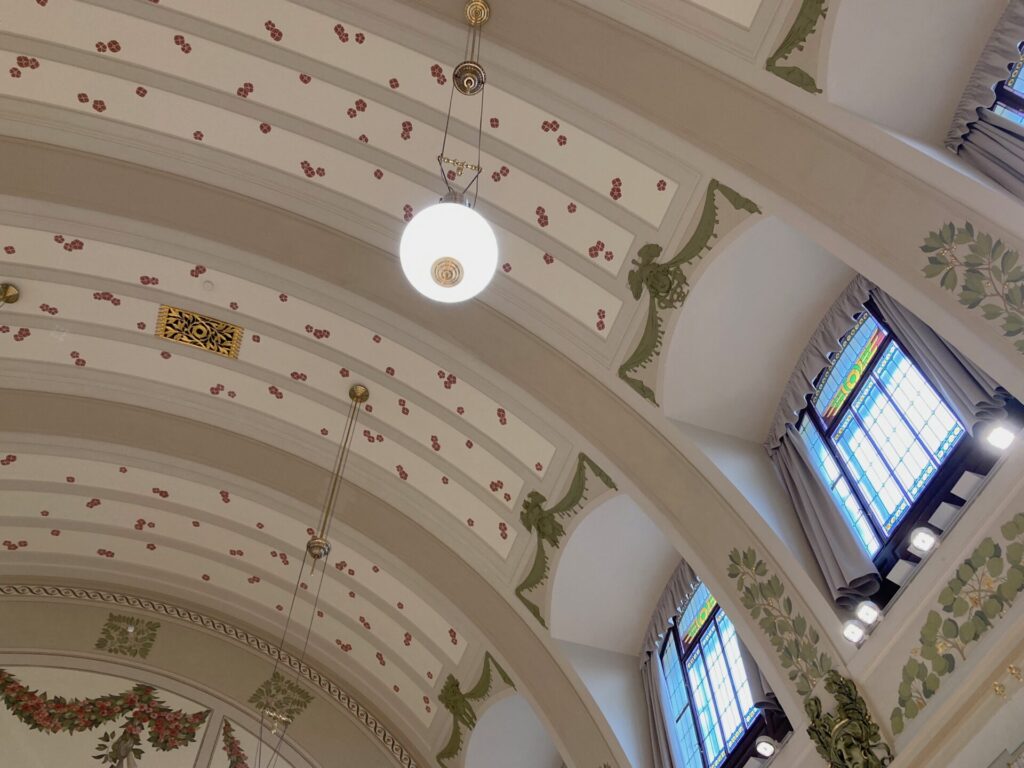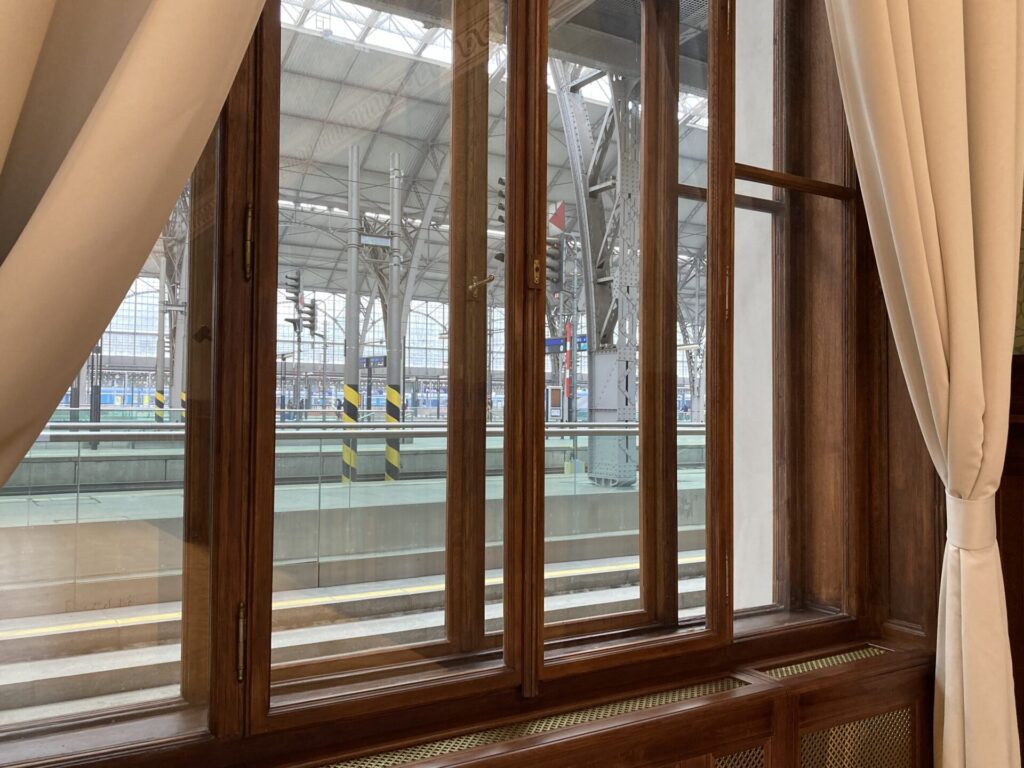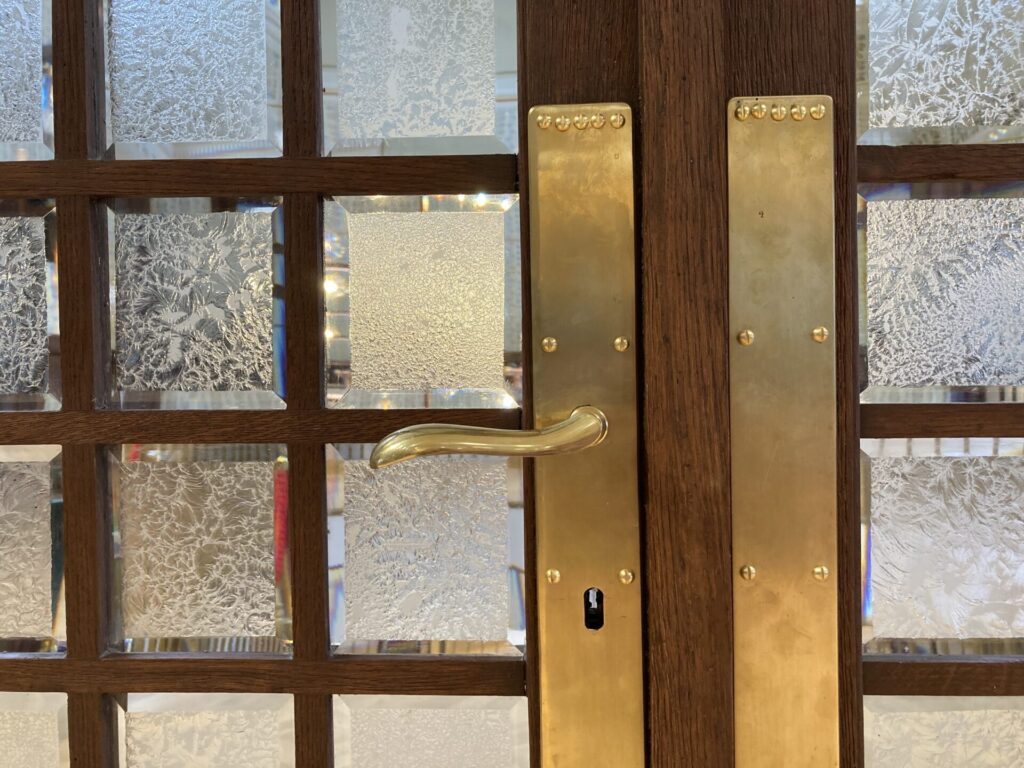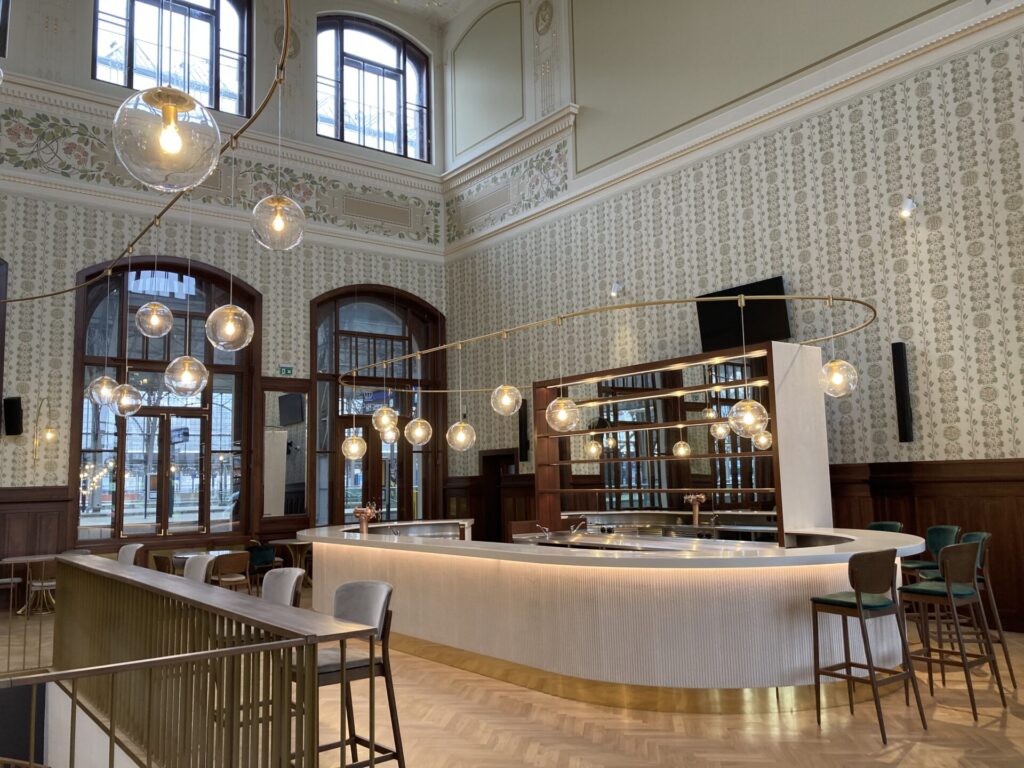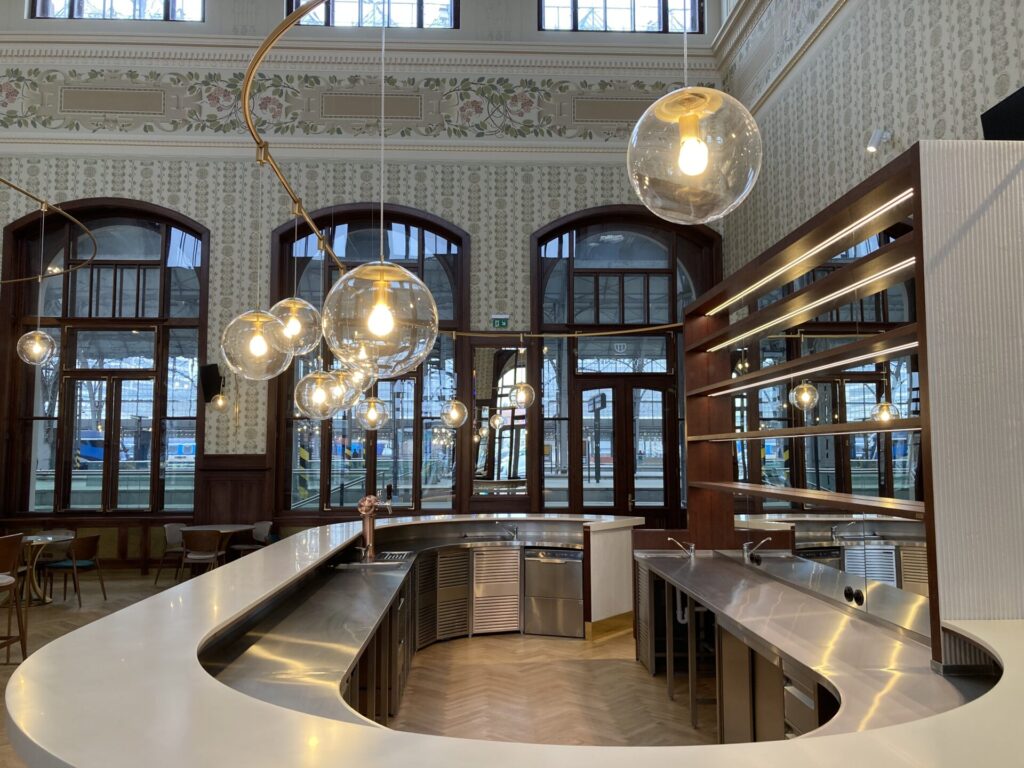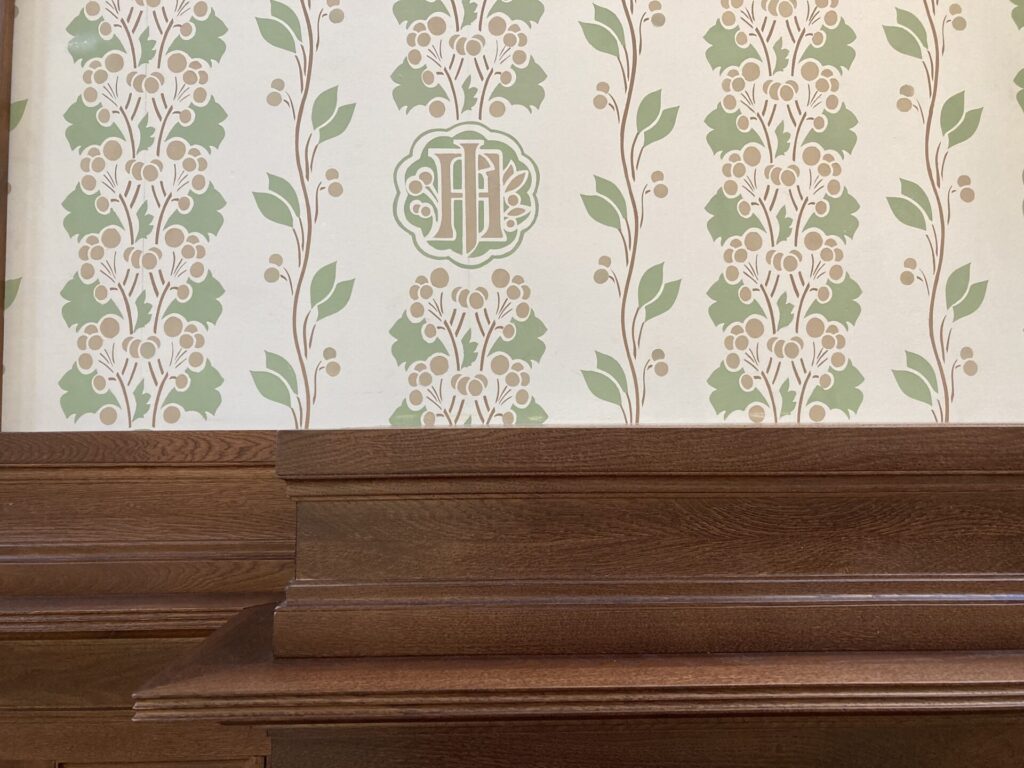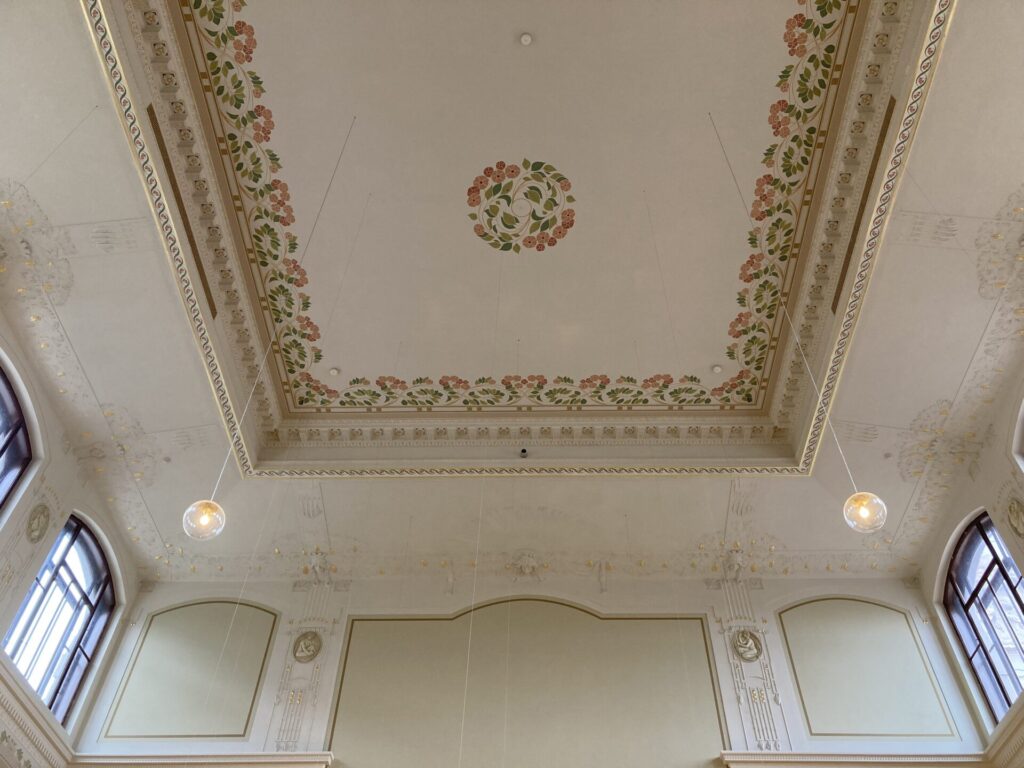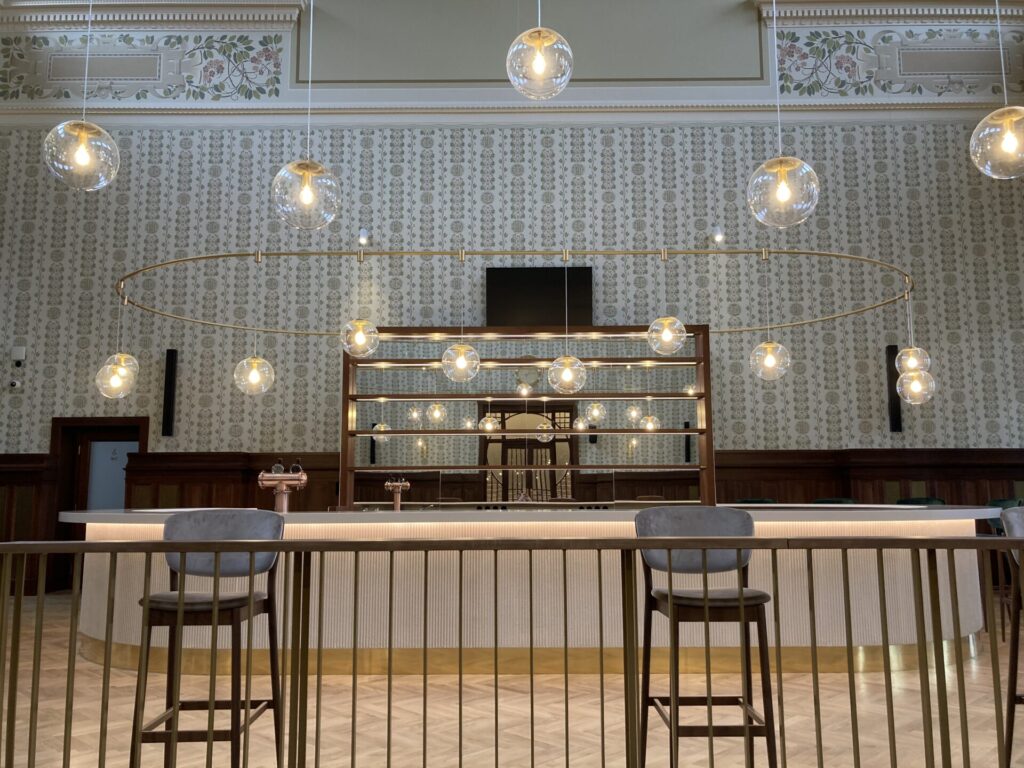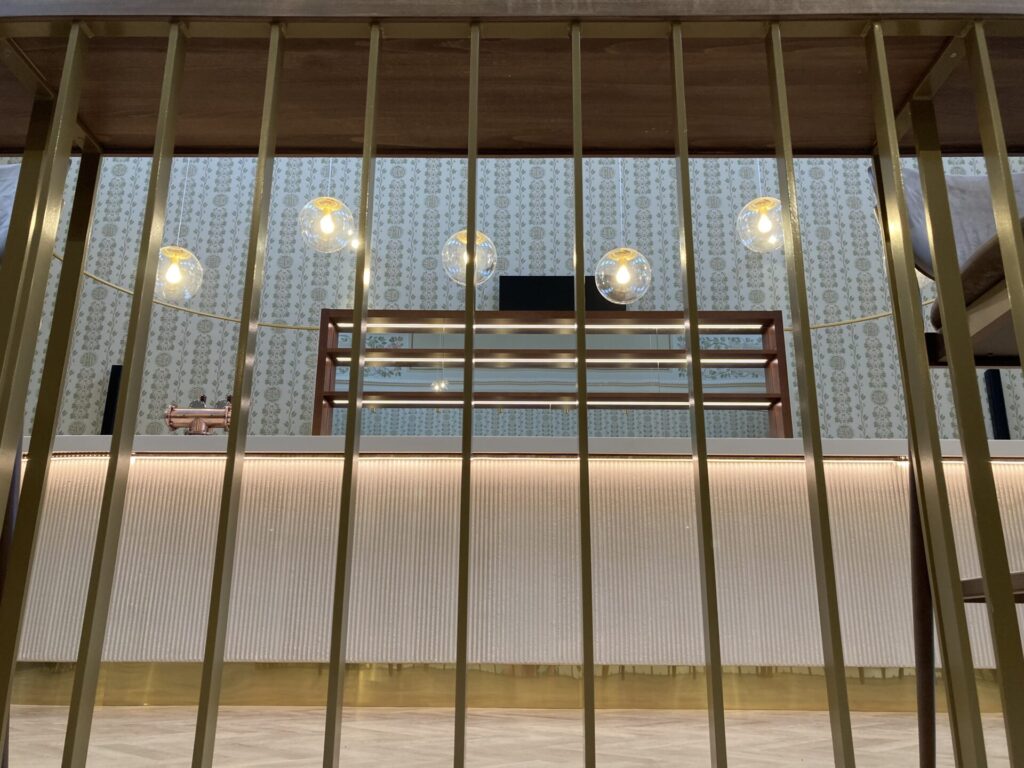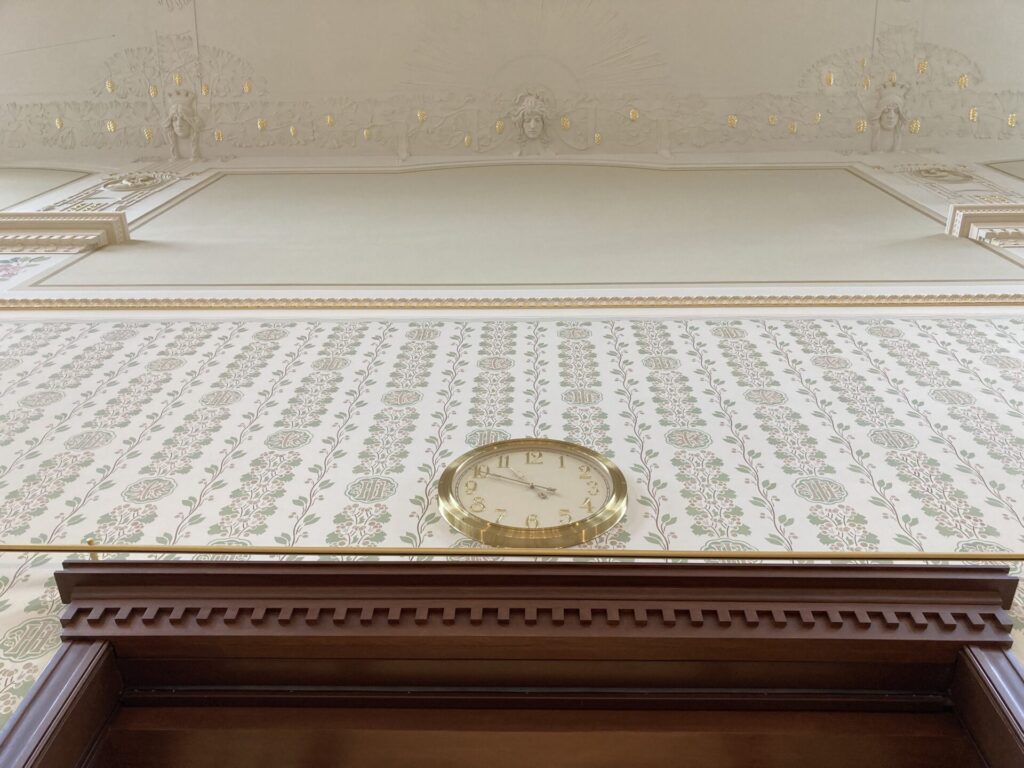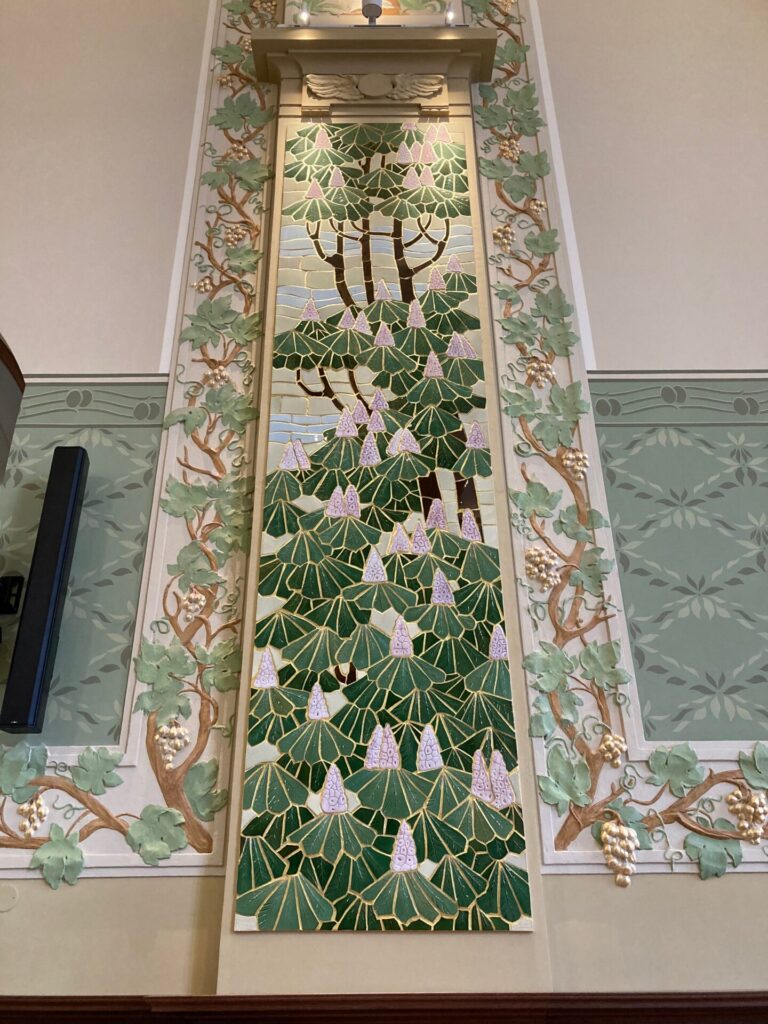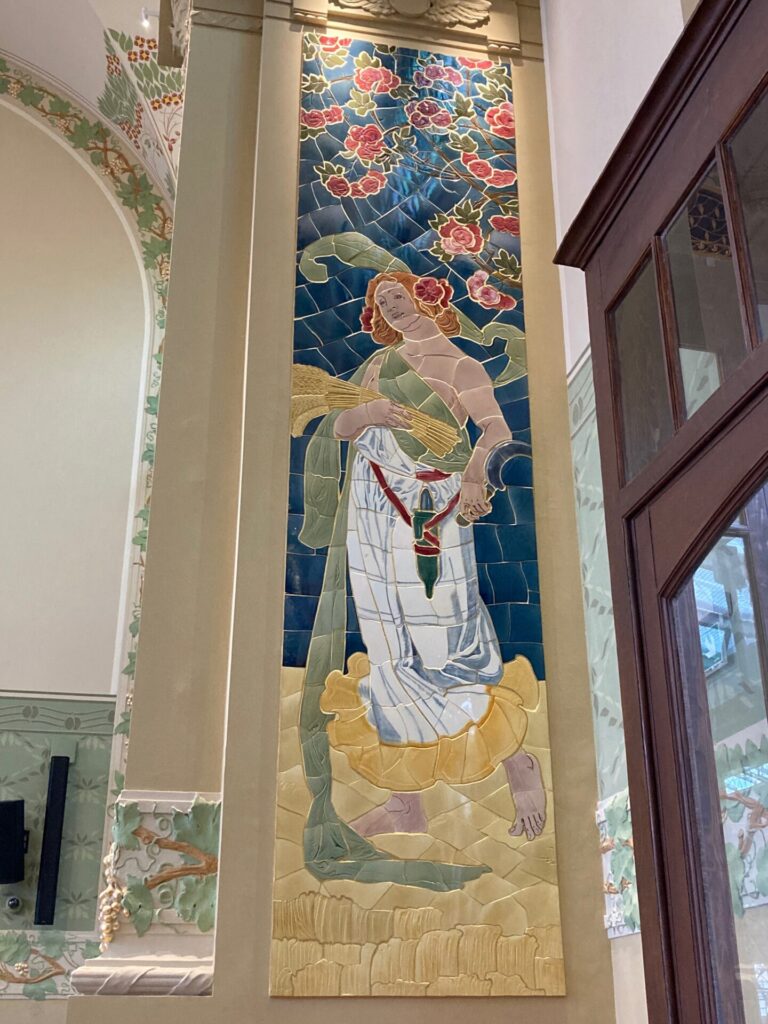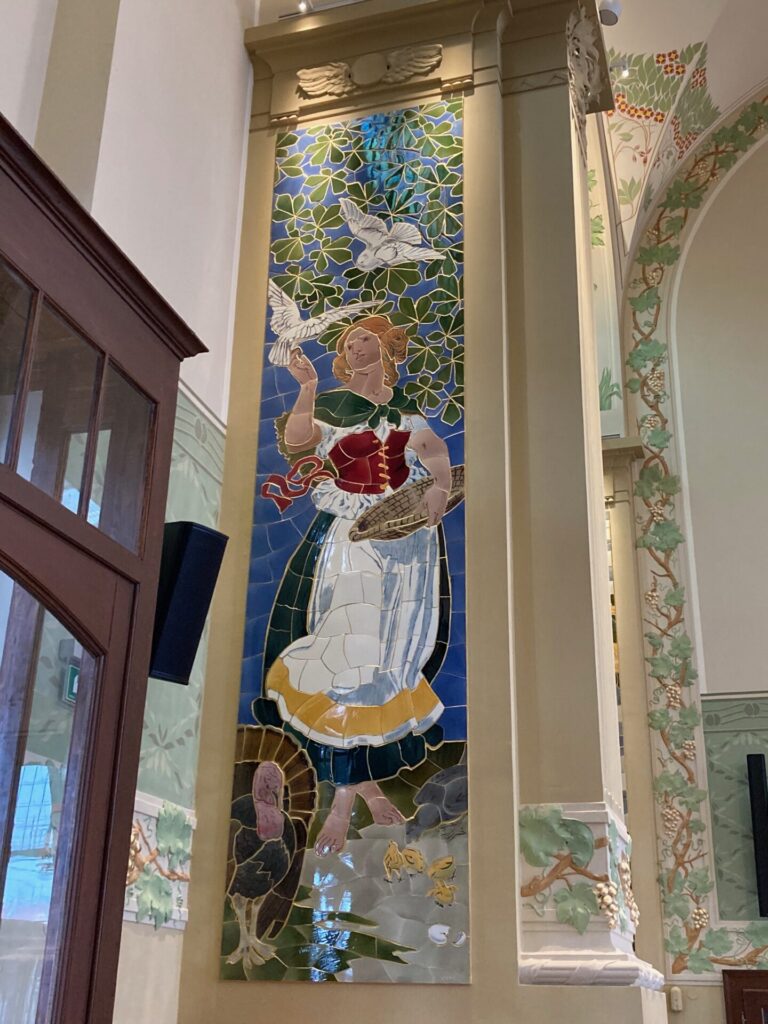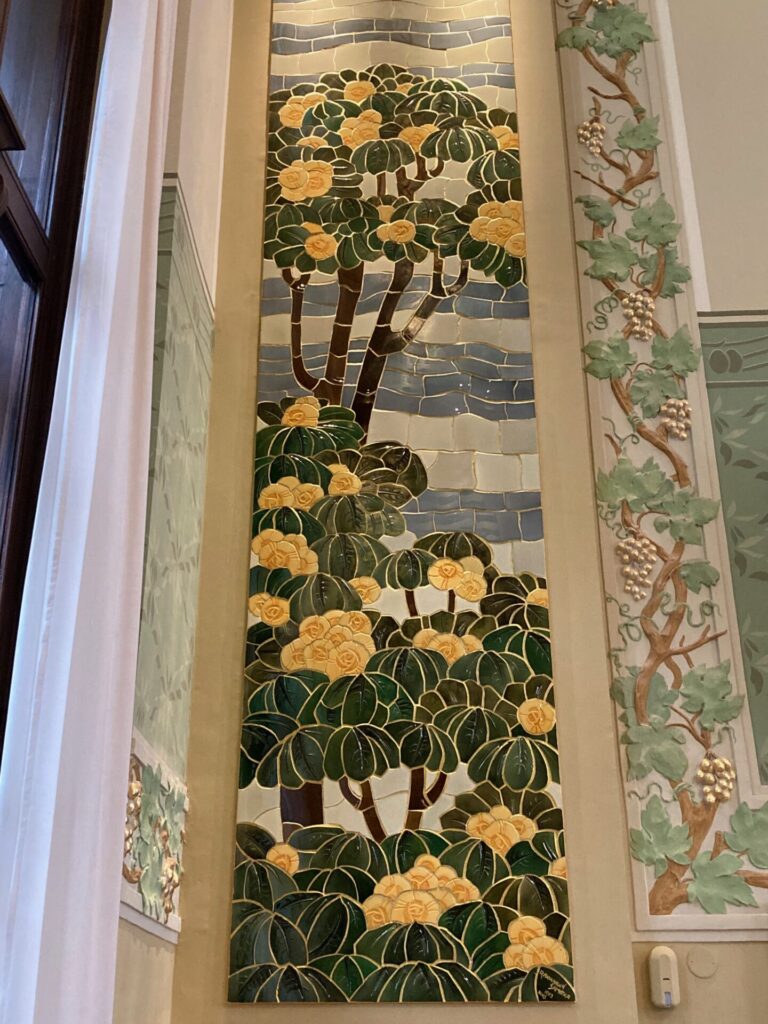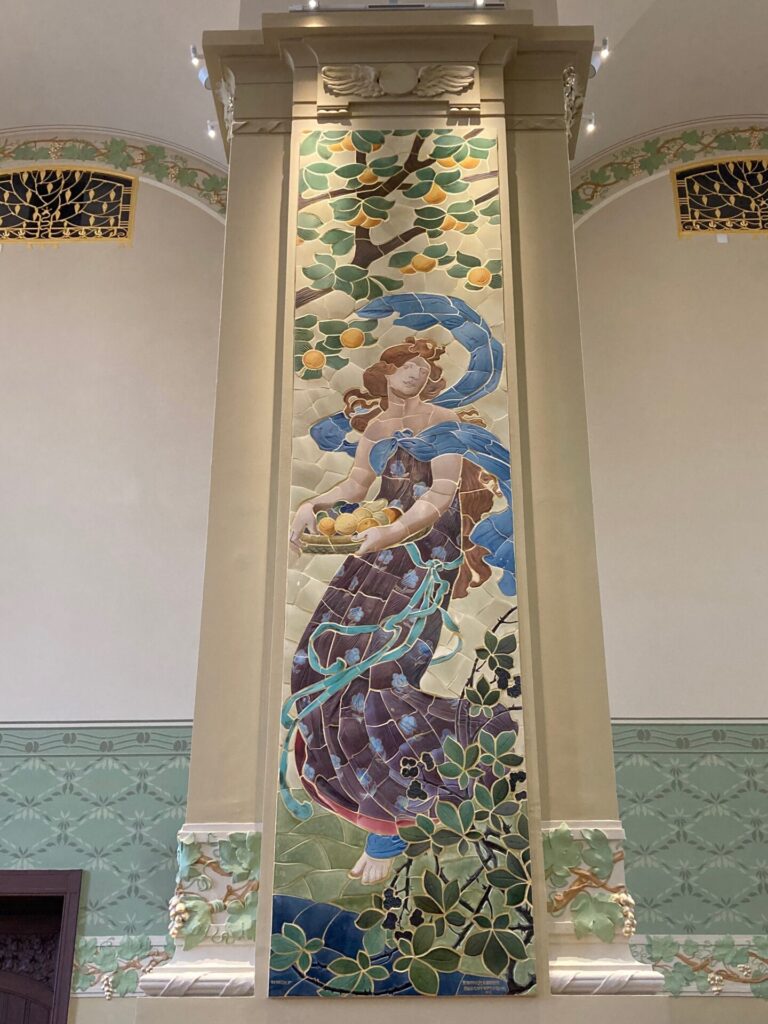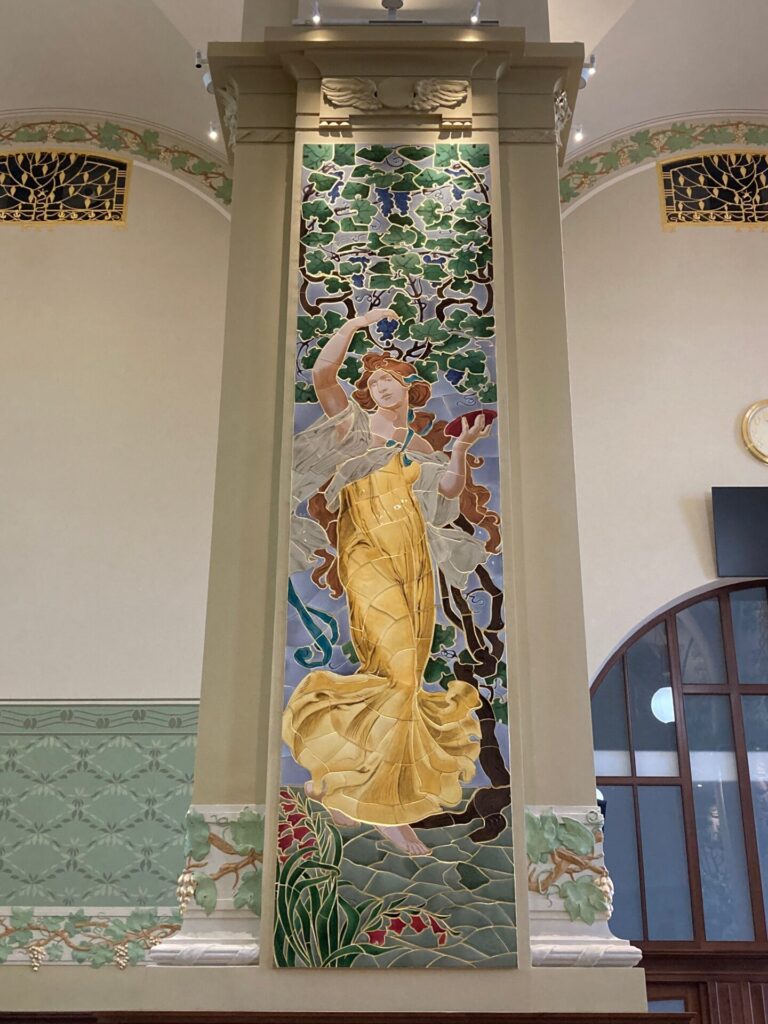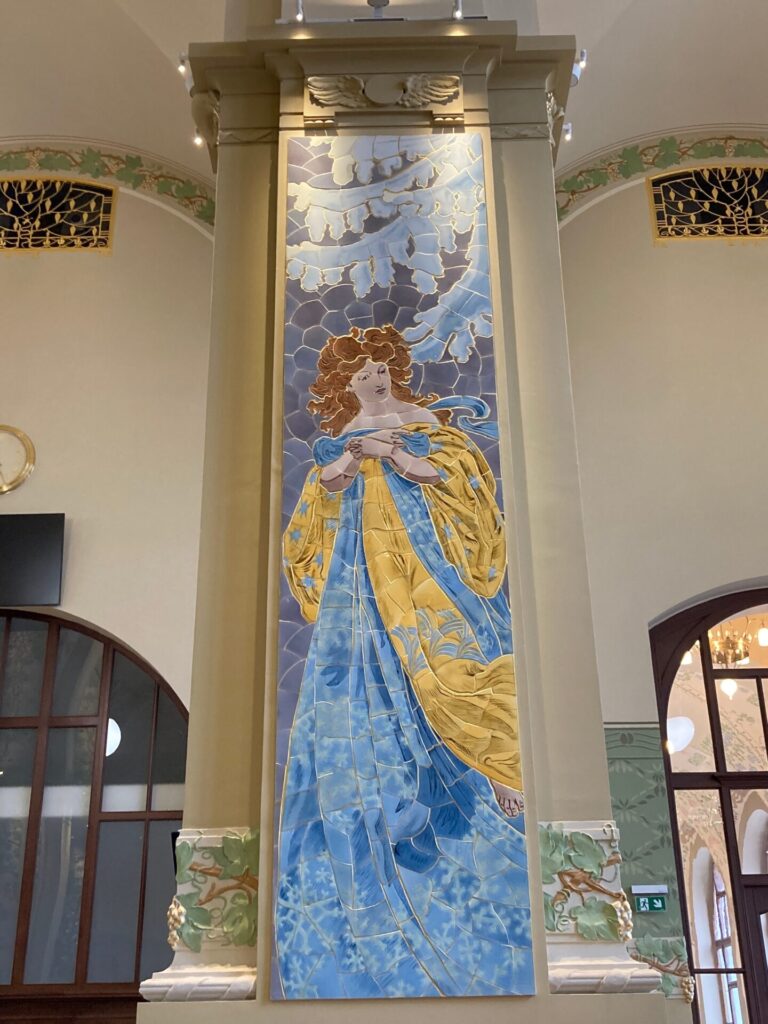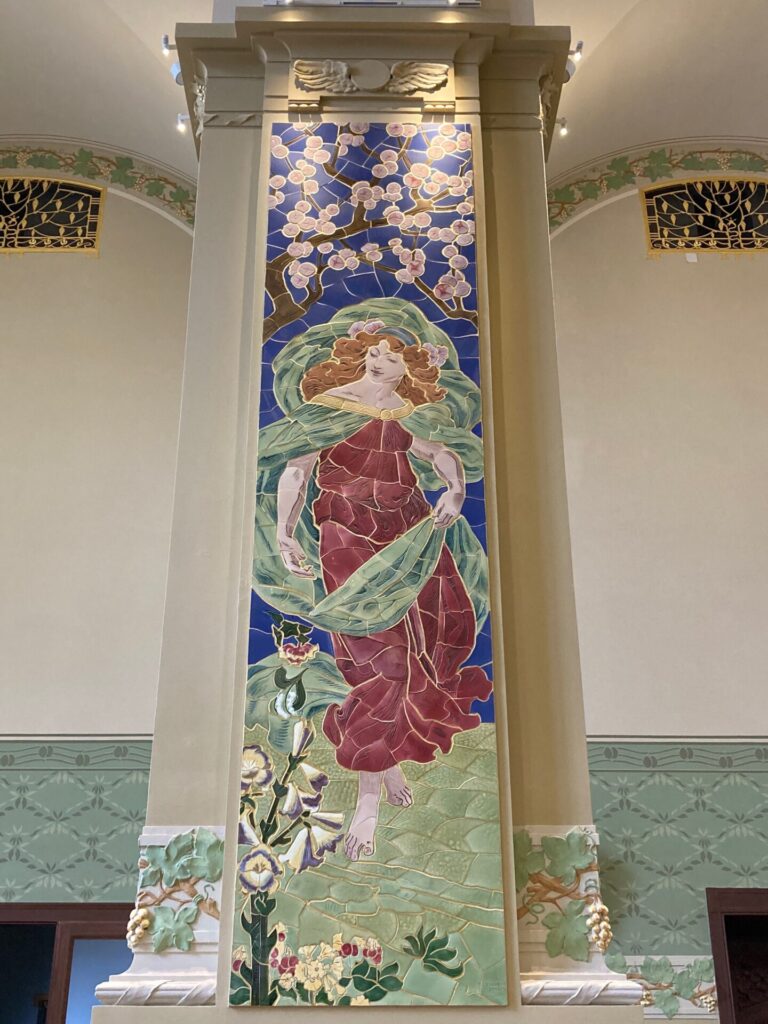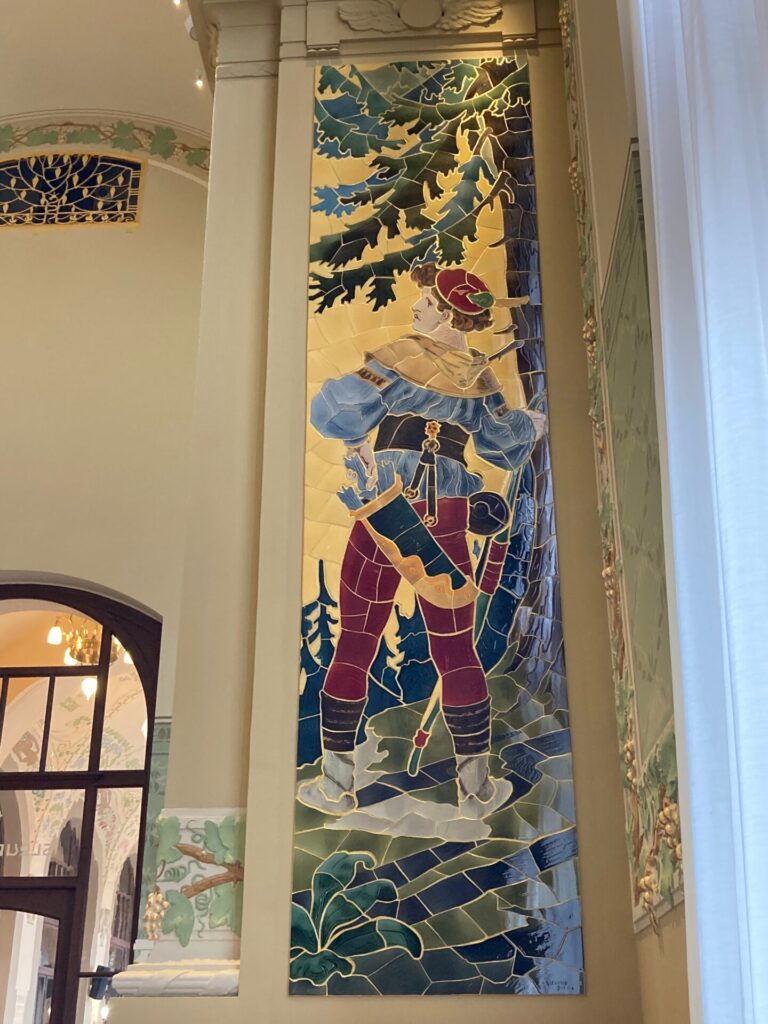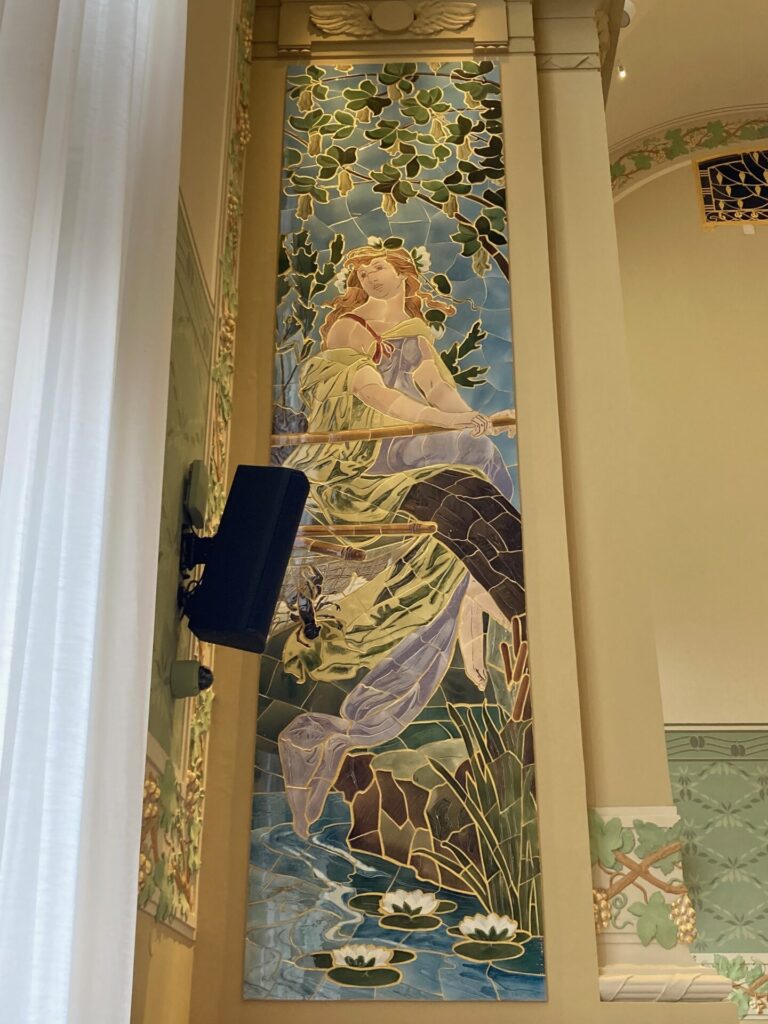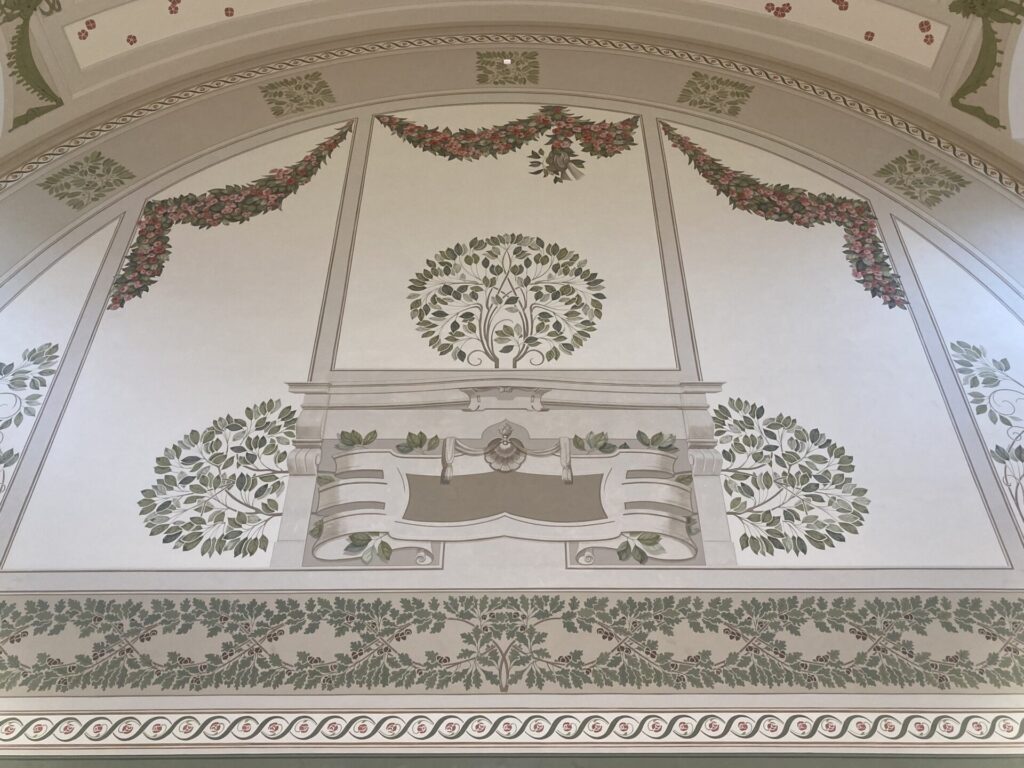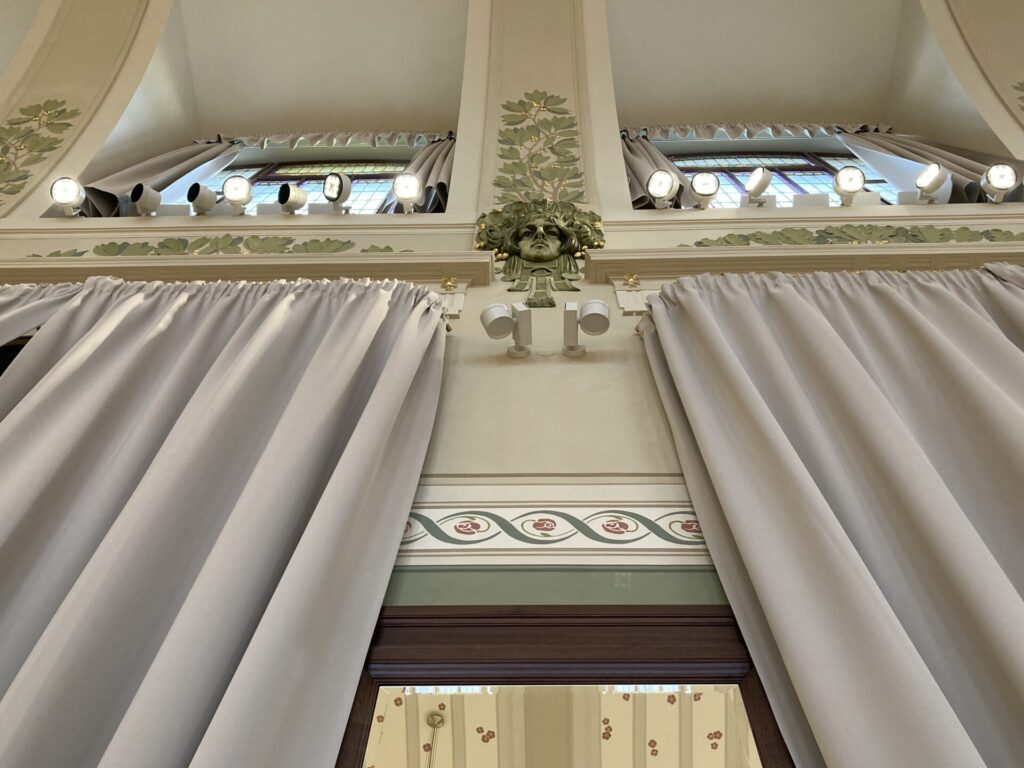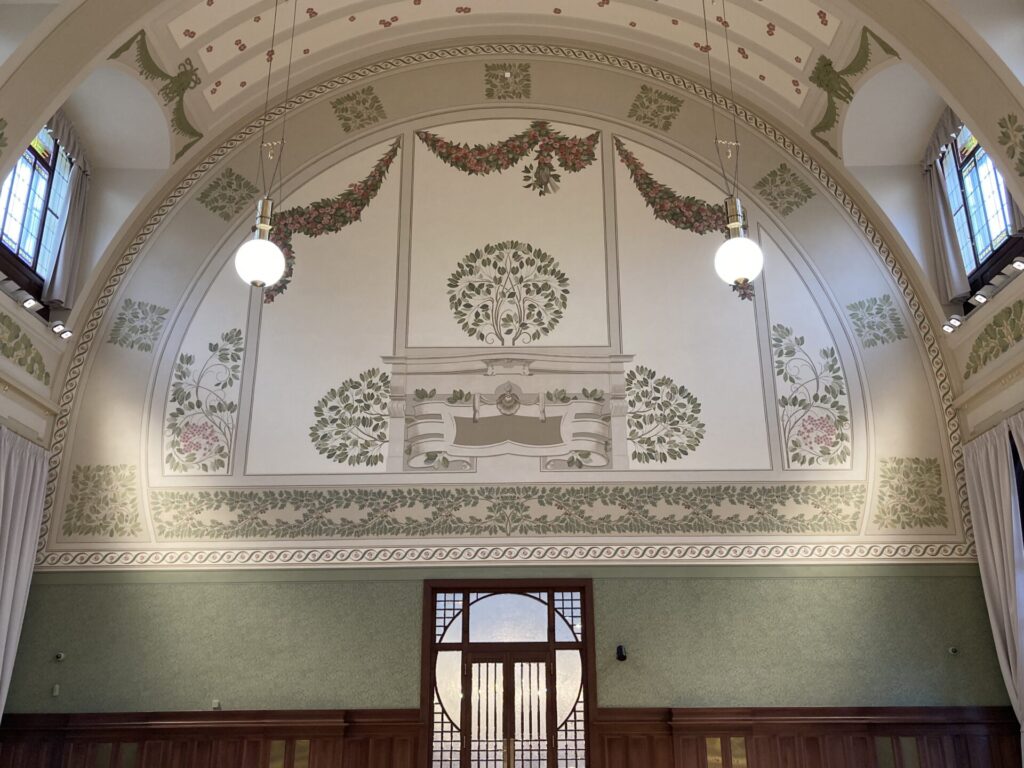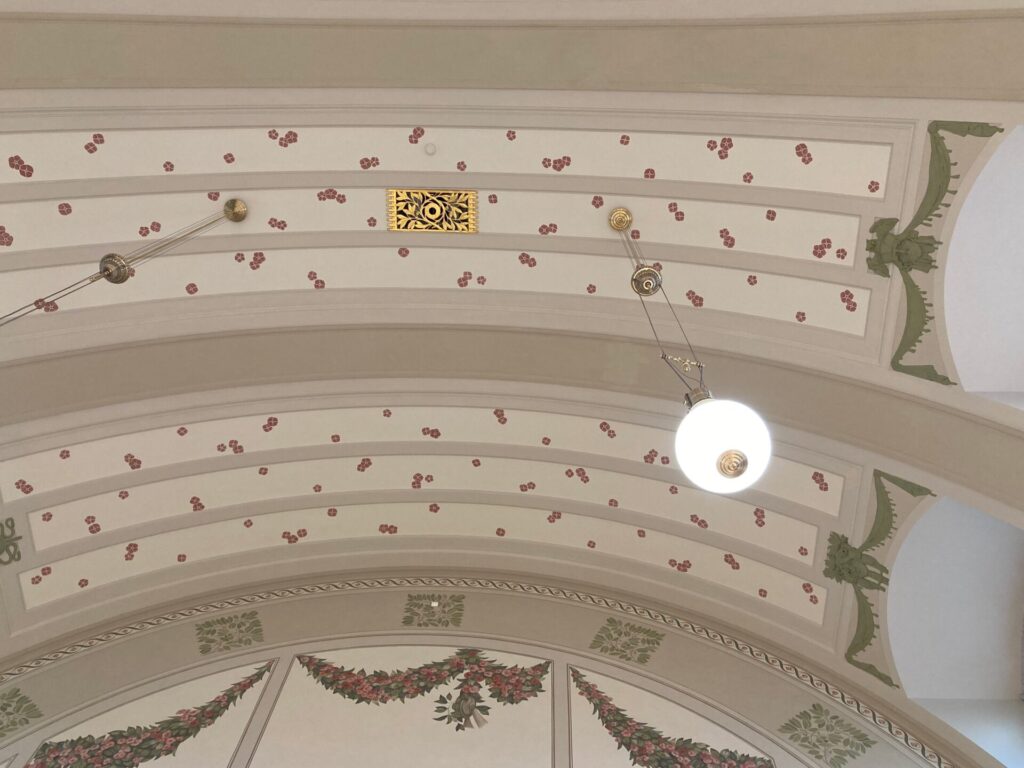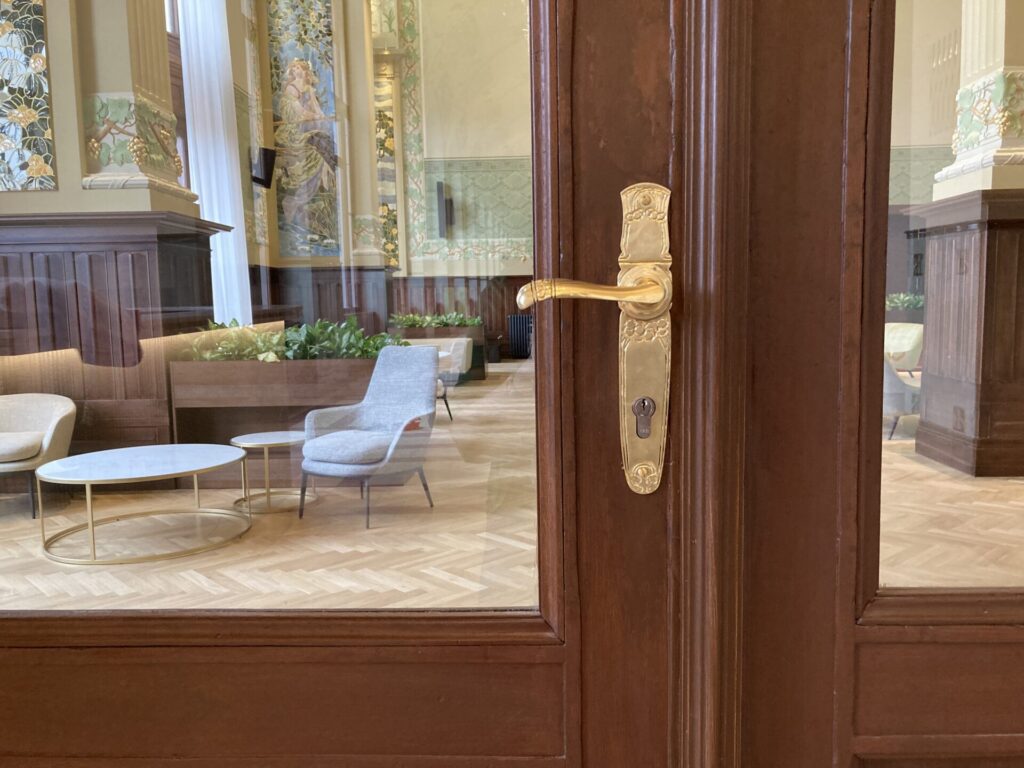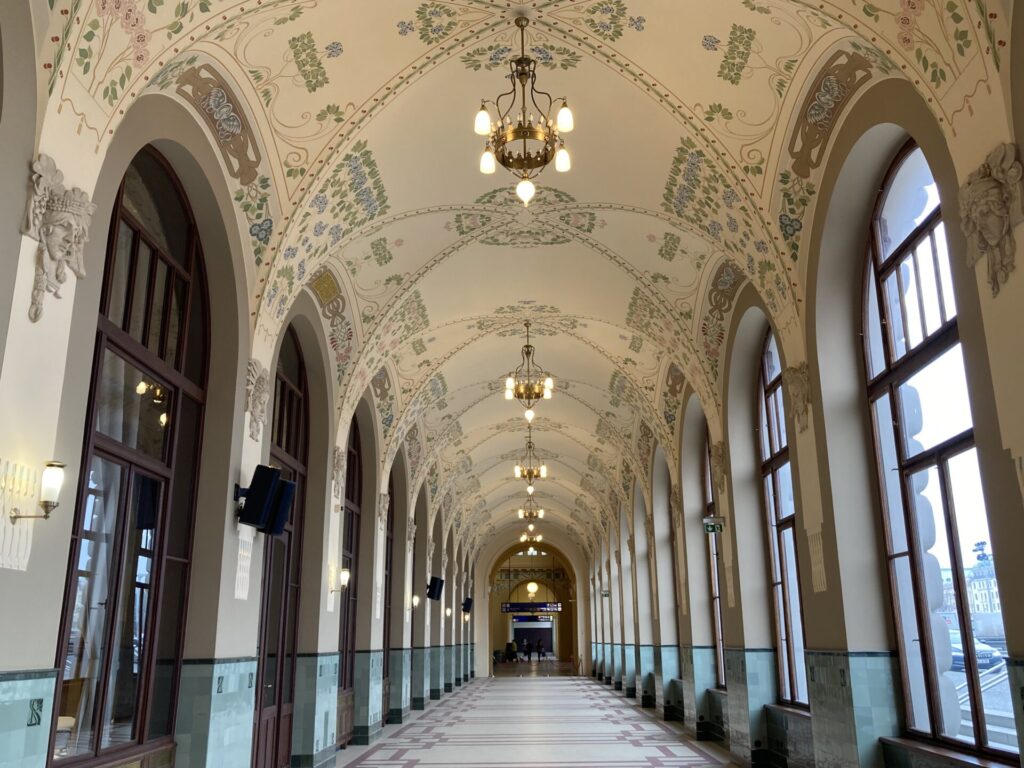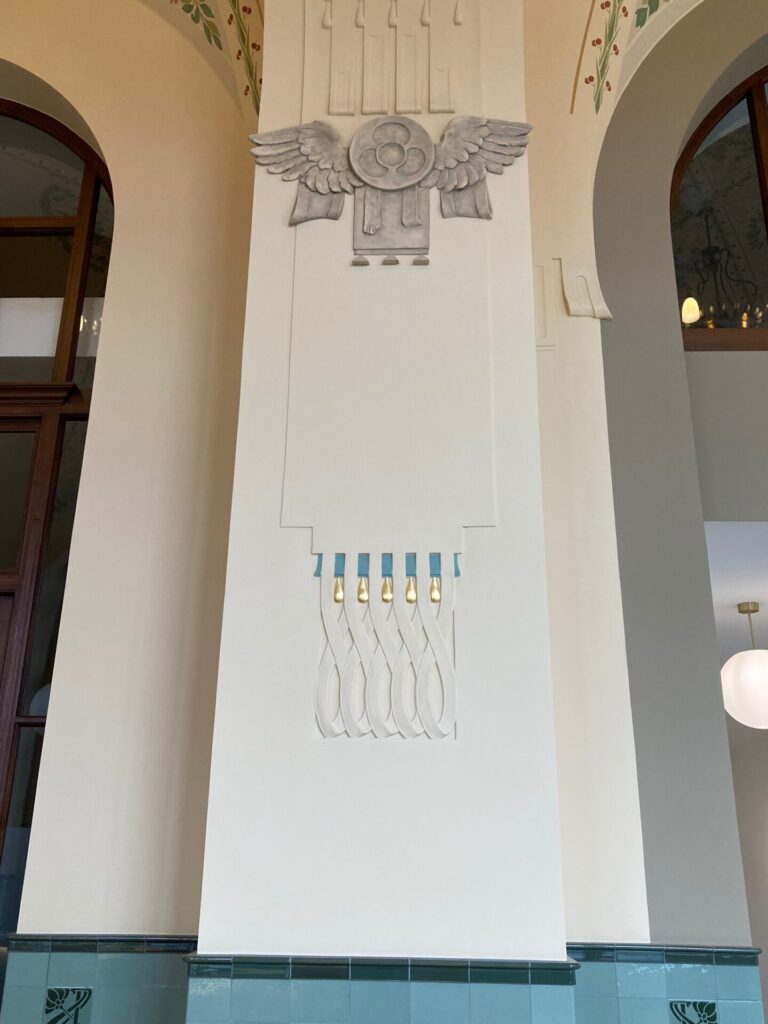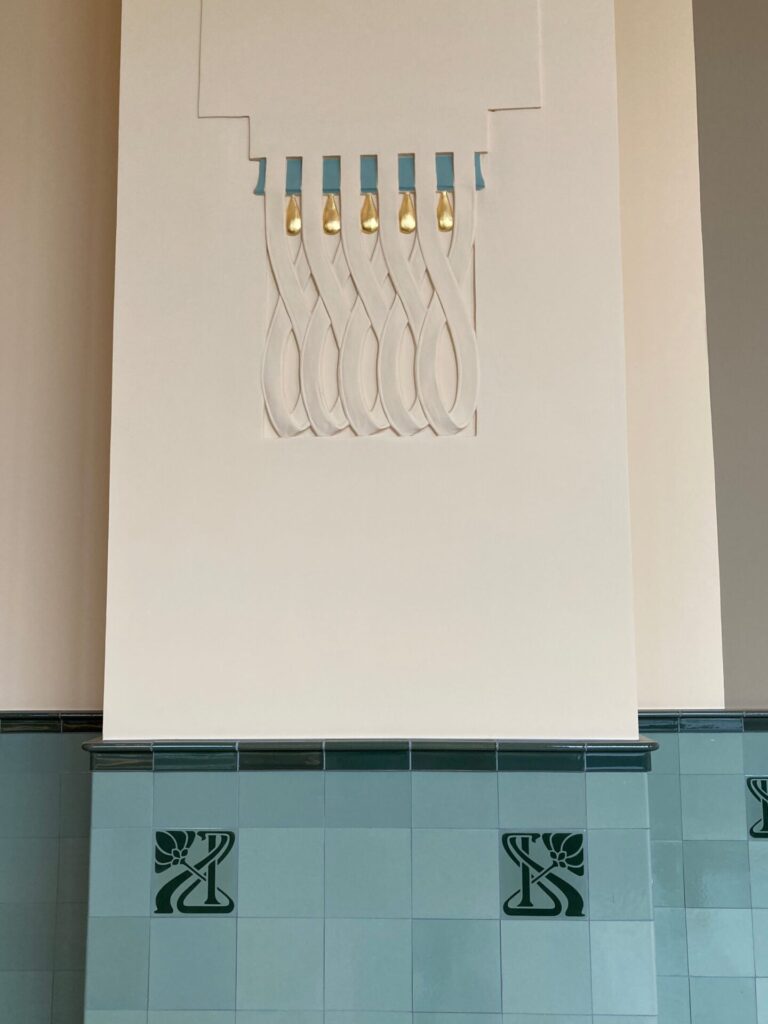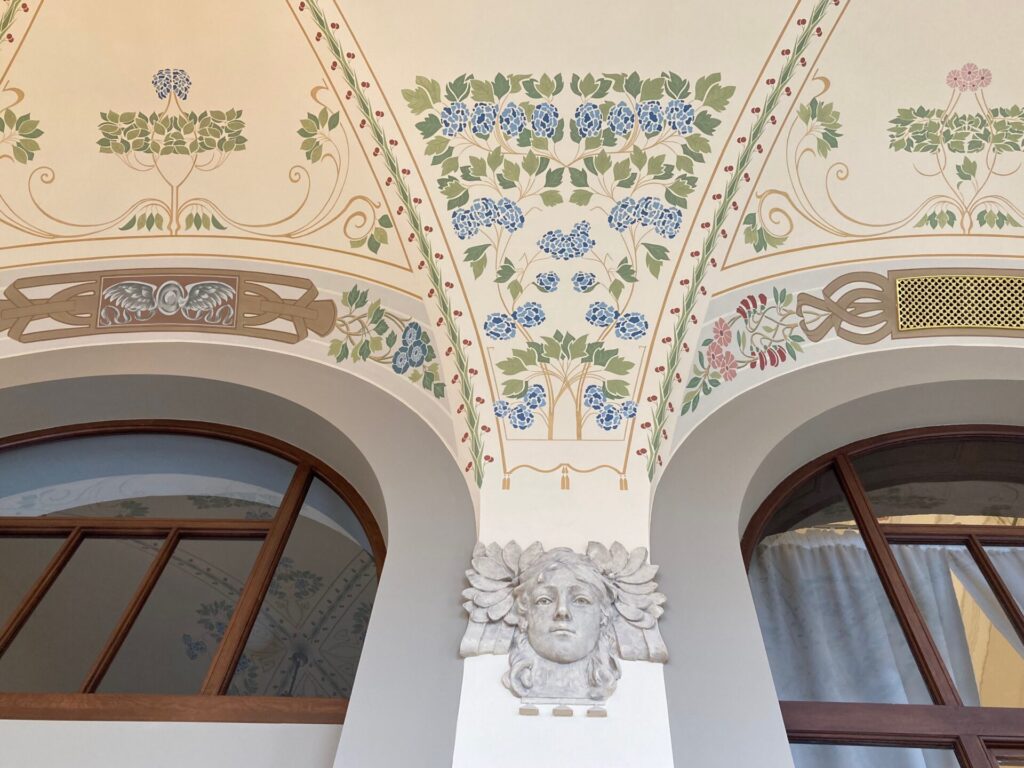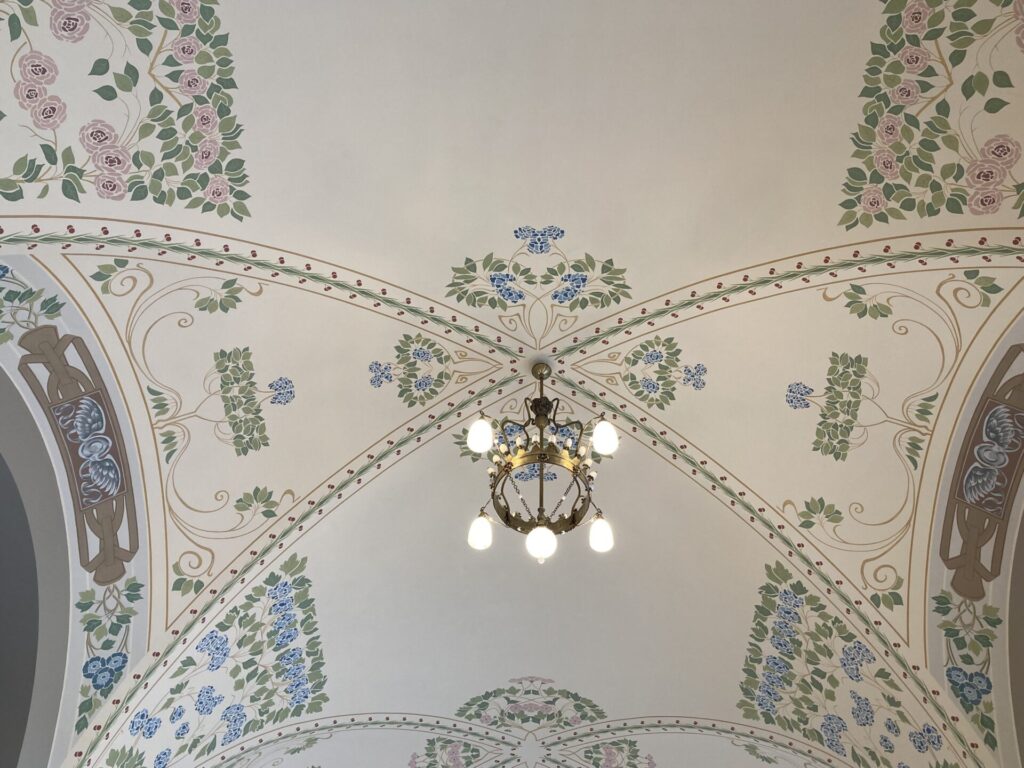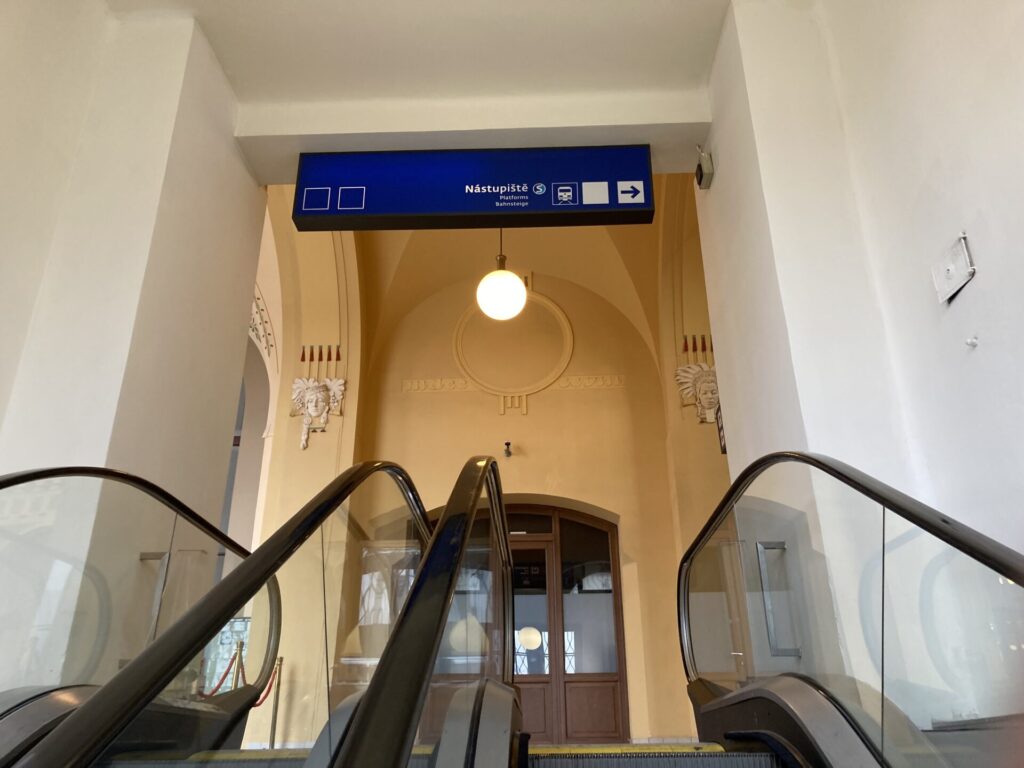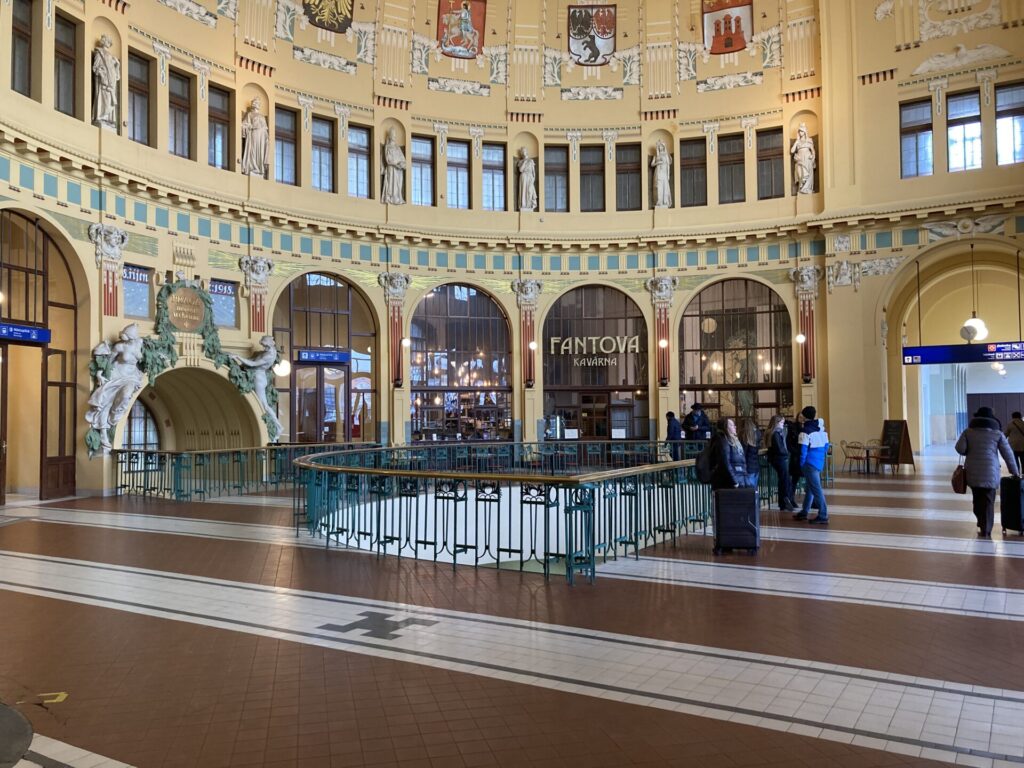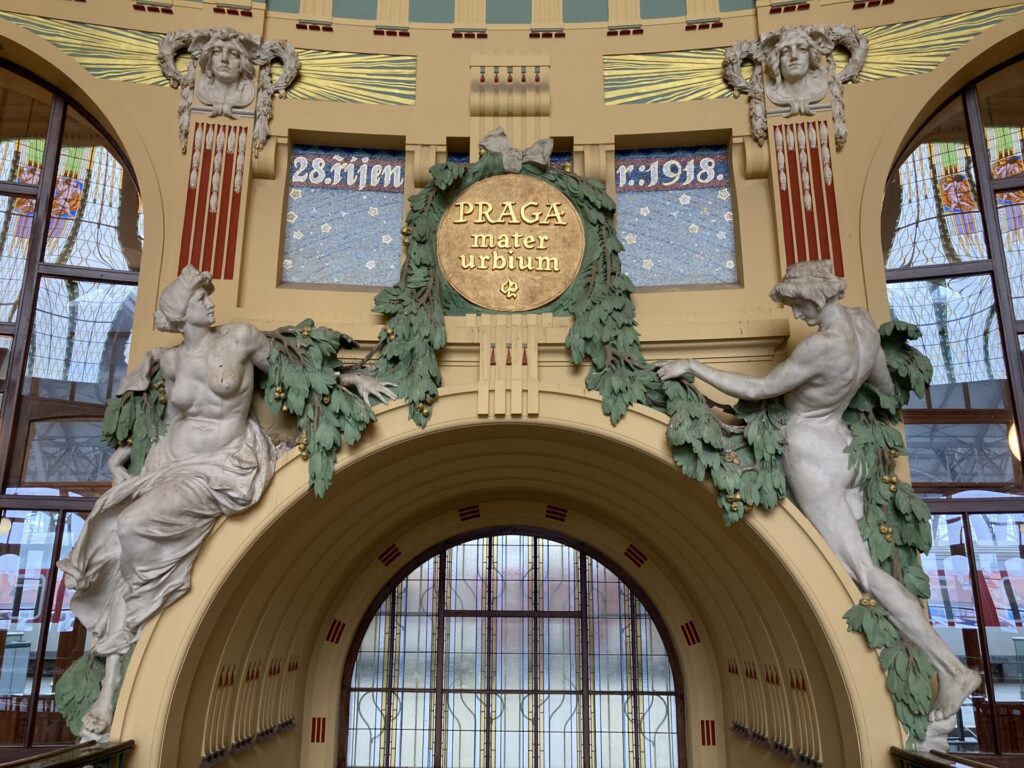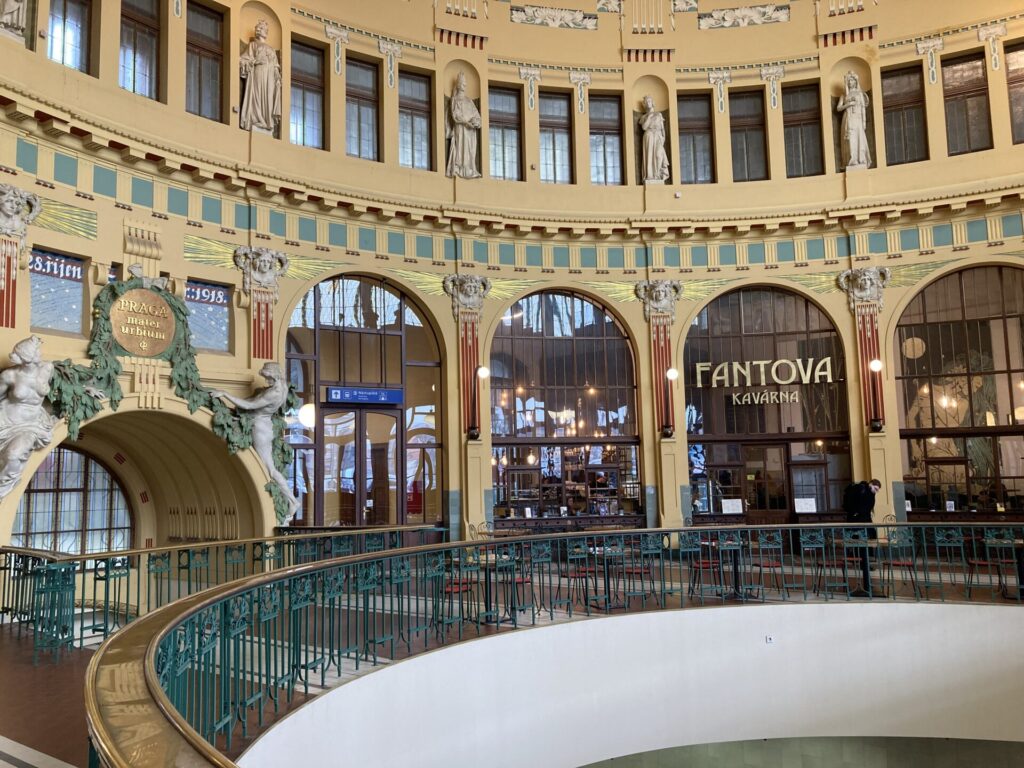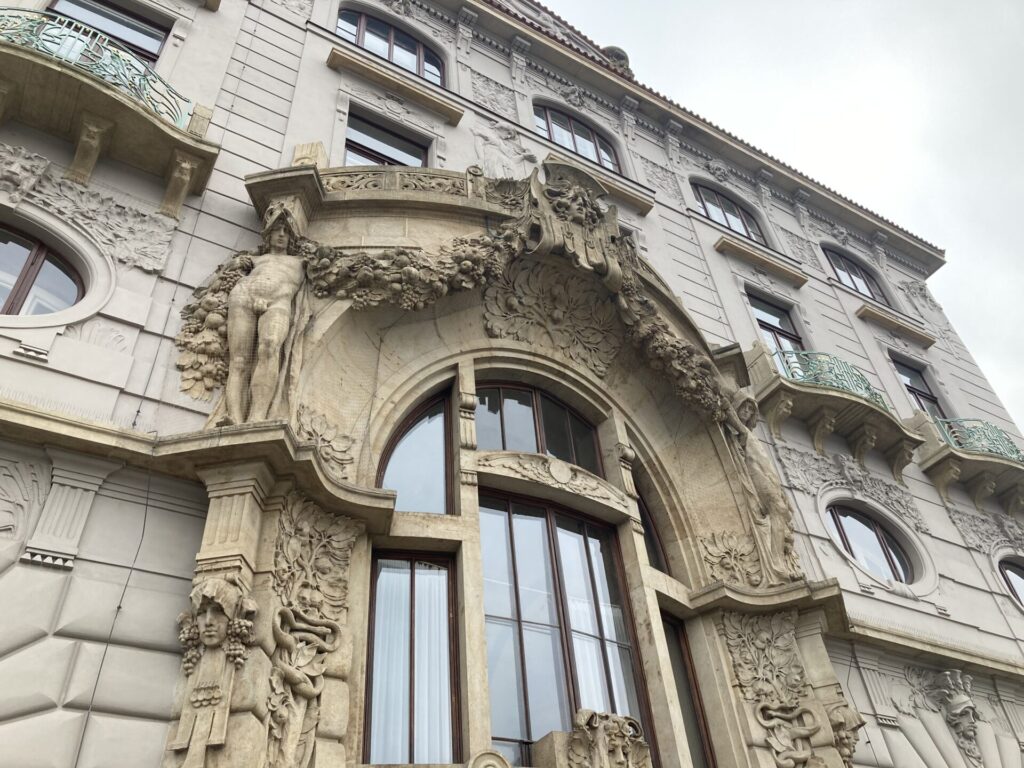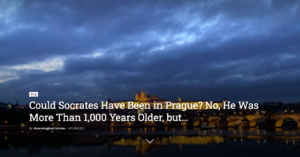One of the essential parts of the beauty of Prague is the diversity of its architecture. In Prague we can find Romanesque, Gothic, Renaissance, Baroque, Classicist, Art Nouveau, Functionalist and Cubist or Rondocubist buildings. Among them are also Brutalist buildings, of which the New Stage building at the National Theater is probably the most famous.
Or there’s modern architecture, which up to now has been synonymous with the Dancing House. However, Zaha Hadid’s “station project” will surely give the Dancing House a run for its money, and if not that, then certainly the new Vltava Philharmonic building, which should be built between 2027-2031.
Prague could be an extensive schoolbook of architecture – and if we wanted to perceive it that way, a very prominent chapter of such a schoolbook would be called “Art Nouveau”. A beautiful example of this architecture is the Municipal House; smaller but no less magnificent is the Vinohrady Theater.
The Prague Main Railway Station is a special example of the coexistence of Art Nouveau and Brutalism. The Art Nouveau building of the Main Railway Station was built at the beginning of the 20th century according to the design of the architect Josef Fanta. Before it, the Emperor Franz Joseph I Station, nicknamed the “Castle Station” for its beauty, stood on the same site. At the turn of the century, however, there was a great development of railway transport and the admired building was no longer suitable. However, the new building was also beautiful because prominent artists of the time worked on it. It is certainly interesting that the new station was built while it was in full operation. “The Castle Station” stood in today’s southern part of the Main Station. During construction, a new northern part was built, then the old building was demolished. Today’s southern part was then built, and finally the hall with Fanta’s Café.
Later times were somewhat problematic for the building of the Main Station. In the middle of the 20th century, the station was no longer suitable for its capacity. So, in the 1970s, unfortunately, an expressway was built that cut through the city like a knife. Thanks to this, the National Museum was cut off from Wenceslas Square. The State Opera House and the Main Railway Station were also left isolated.
A two-story brutalist-style check-in hall was added to the railway station, built at the same time as the first line of the Prague metro (Hlavní nádraží station was even the first metro station built in Prague). Architecturally, the hall was quite successful, but quite incompatible with the old Art Nouveau-style building. However, the old and new station buildings did not “live together”. Today, people enter the check-in hall, pass under the expressway and go up the stairs to the individual platforms to the track level. An ordinary passenger does not enter the Art Nouveau building at all.
In recent years, however, Fanta’s building has come to life. First, the roofs and facades of the buildings were repaired. The central part was repaired too and Fanta’s Café started working again. In December, the revitalized northern wing of the building was presented. The repair of the southern wing is set to follow.
The Column Hall
Four massive columns decorated with ceramic mosaics gave it this name. On them there are motifs of the four seasons. Other surfaces are decorated with allegories of hunting, fishing, field and farm work, as well as floral motifs. This decoration is largely thanks to the handiwork of painters Jan Beneš and Karel Klusáček and sculptor Stanislav Sucharda. However, everything was carried out according to the designs of Josef Fanta – the stained glass windows, tiles, stoves, painting, lamps, fittings, and glass.
Unfortunately, a problem arose with the outdoor sculptures of two Atlases holding a balcony. According to Fanta’s proposal, they were supposed to be naked, but the building was deemed immoral, so they had their lap covered with a vine leaf. During the reconstruction, the statues were returned to their original form.
The Column Hall was previously used as a waiting room for third-class passengers for decades, so it is almost a miracle that the mosaics stayed intact. All that was needed was to clean them up and restore the joints. The floor was originally wooden, then tiles were placed over it, and now there are floor-heated wooden parquet floors. Most of the windows and doors are original, and they are of such high quality that you can’t even hear the trains in the hall.
Fanta`s Hall
In the adjacent hall, Fanta`s Hall, there was the waiting room for 1st and 2nd class passengers and a restaurant connected to it. It is the only space with a flat ceiling, otherwise there is a barrel vault everywhere. The hall was roofed at the level of the cornice, and on its first floor there was a dormitory for the engine-drivers and conductors who arrived with the train late at night and left the next morning for the journey back to their home station.
Not even the paintings survived. Only during the restoration was it discovered that under the six “ordinary” coats of paint there was an Art Nouveau painting. On that occasion, the Czechoslovak national emblem was also unveiled. It was officially acknowledged only in 1920, but was painted here already in 1918 – to welcome President Tomáš Garrigue Masaryk after his return from exile. (The sign is original, only the slogan “Truth Prevails” (Pravda vítězí) had to be created again, because in the 1950s they cut into the wall to install electric cables in its place – it’s quite symbolic since the truth did not prevail much in those dark 1950s.)
(The halls are decorated with the emblem of all railway workers, the winged wheel (first used in 1835 on the occasion of the opening of the first German railway from Nuremberg to Fürsth.)
Foyer Café
A new cafe will soon be opened in the space of the former restaurant. Thanks to the fact that the preservationists allowed the floor to be broken through, it will be accessible from the Žižkov underpass even for people who do not go anywhere by train (and it is very likely that this will appeal to at least some of the 13,000 students of the University of Economics, whose school the underpass leads to in the Žižkov district).
The reconstruction of the northern wing of the building cost 380 million crowns. Since it is a listed building and today it has more of an aesthetic function (the traffic of the station is fully saturated by the brutalist hall). It is often rented out for social and cultural events. People will be able to visit the cafe, and they can book a tour of Fanta`s Hall and the Column Hall.
Thank you to Terezie Krejbychová for the tour and information

Related articles:
Memorial to Parents of Winton Children (Jan Huňát)
Why Prague Main Railway Station Is and Isn’t Named After the US President Woodrow Wilson
Fanta’s Café at “Fanta’s Station”
A Functionalist Monument that You’ll Have to Find













